What we caught we threw away,
what we didn’t catch we kept
CCA: Center for Contemporary Arts, Glasgow 6 April - 18 May 2013
Chisenhale Gallery, London 24 May - 14 July 2013
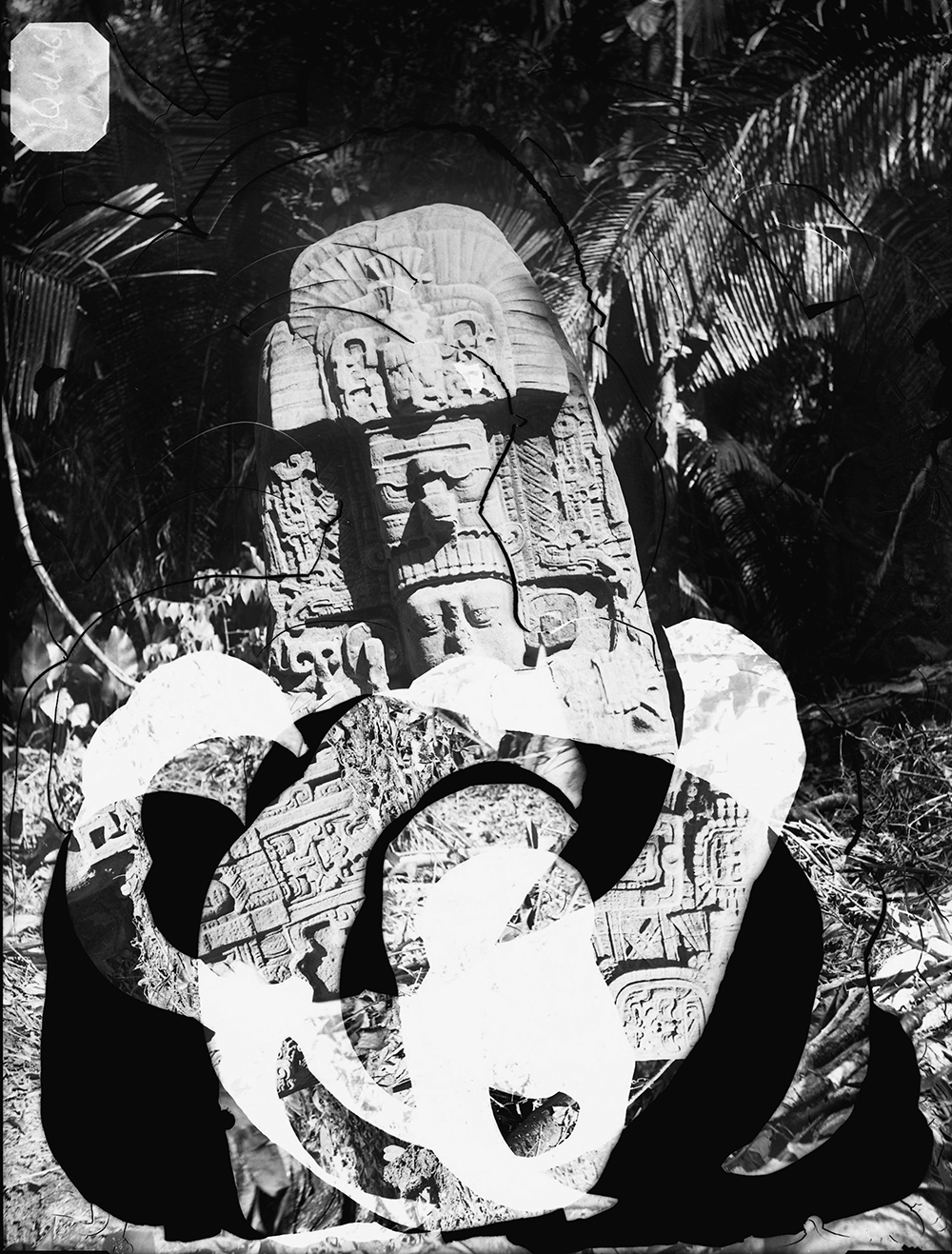
Damaged image of Stela K, Quiriguá, Guatemala, 1894
Photo: Alfred Maudslay

Zoomorph P, Quiriguá, Guatemala, 1894
Photo: Alfred Maudslay

Zoomorph P, Quiriguá, Guatemala, 1894
Photo: Alfred Maudslay

Zoomorph P, Quiriguá, Guatemala, 1894
Photo: Alfred Maudslay
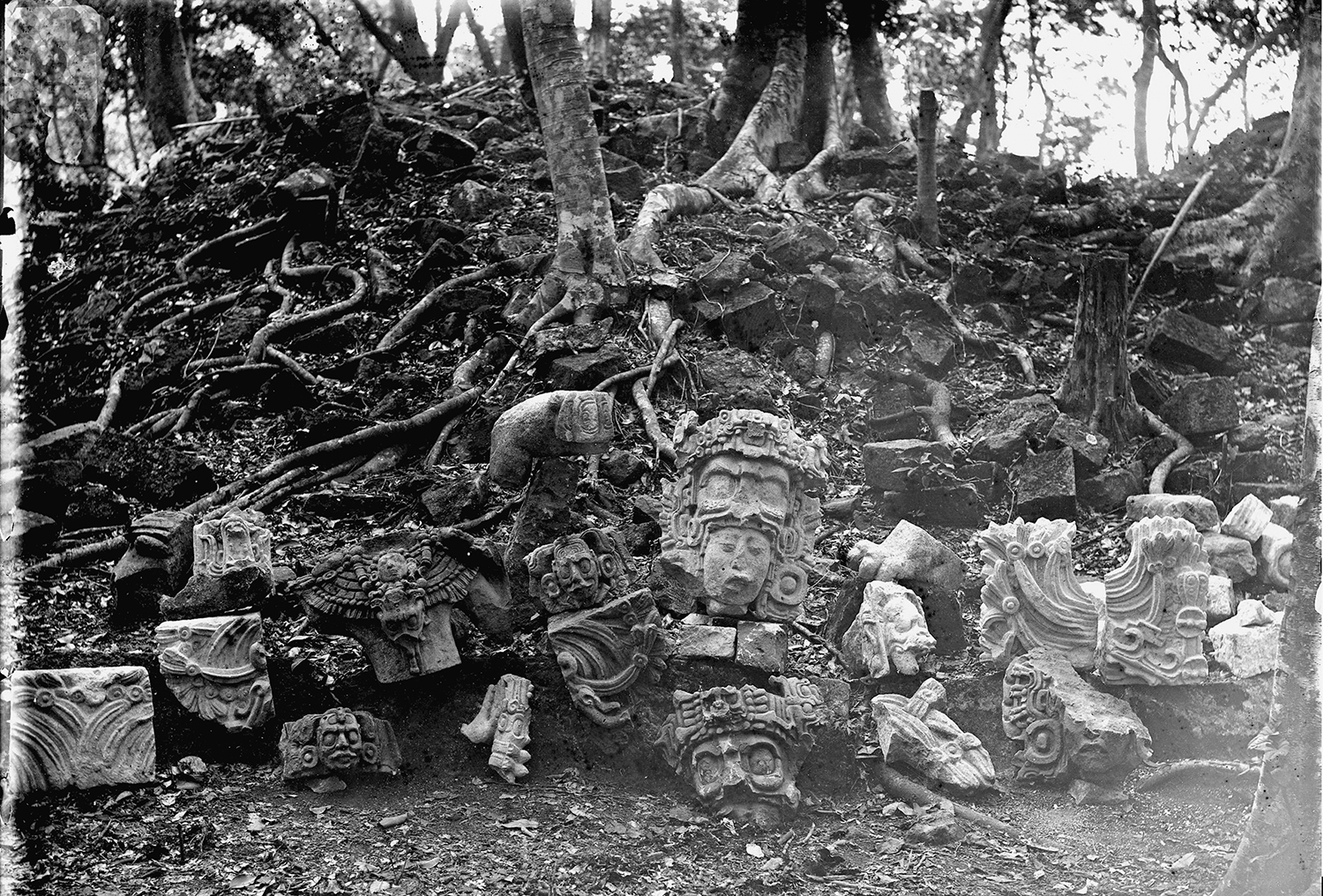
Zoomorph P, Quiriguá, Guatemala, 1894
Photo: Alfred Maudslay
Alfred Maudslay was a British explorer who travelled extensively in the Maya region in Mexico and Guatemala between 1880-1920. Maudslay played a crucial role in the understanding of Maya hieroglyphic writing. He recorded the monument’s inscriptions with drawings, photographs and plaster casts.
He also developed the technique known as paper squeezes, moulds made out of papier-mâché. I am interested in the trajectory of these objects, which depart from a direct contact with the original monuments and end up as negatives, positives, photographs and drawings. This immense amount of physical information travelled first as raw materials from England to the Maya region in the form of wrapping paper and plaster from London to Guatemala, returning to London as a precise and diverse record of the ancient Maya monuments. Maudslay’s documents, photographs and casts are part of the collection of the British Museum. During the summer of 2012, I made a visit to the museum’s library and discovered the complicated negotiations he had with both the British Museum and the V&A Museum, trying to convince them to keep his casts and moulds as part of the Museum’s collection.
Curiously enough, the institutions were not particularly interested in keeping all the surrogates and ghost objects produced by Maudslay. Nowadays, this material is of great value due to the fact that many of the original monuments were smuggled or destroyed, Maudslay’s objects being the only existing record of them.
Since 2011, I have been experimenting with Maudslay’s techniques, realizing a series of paper squeezes out of different urban and natural landscapes in Mexico City, Oaxaca, Berlin, Scotland and Costa Rica. I was interested in a one to one appropriation of an object, with such basic resources as paper, glue and my hands. The result is a series of shadow moulds, or paper traps. The objects, casts, drawings, photographs and texts produced by Alfred Maudslay are now kept in storage at the British Museum, as quiet witnesses of an attempt to capture and absorb the object of observation, squeezing it until the last consequences.
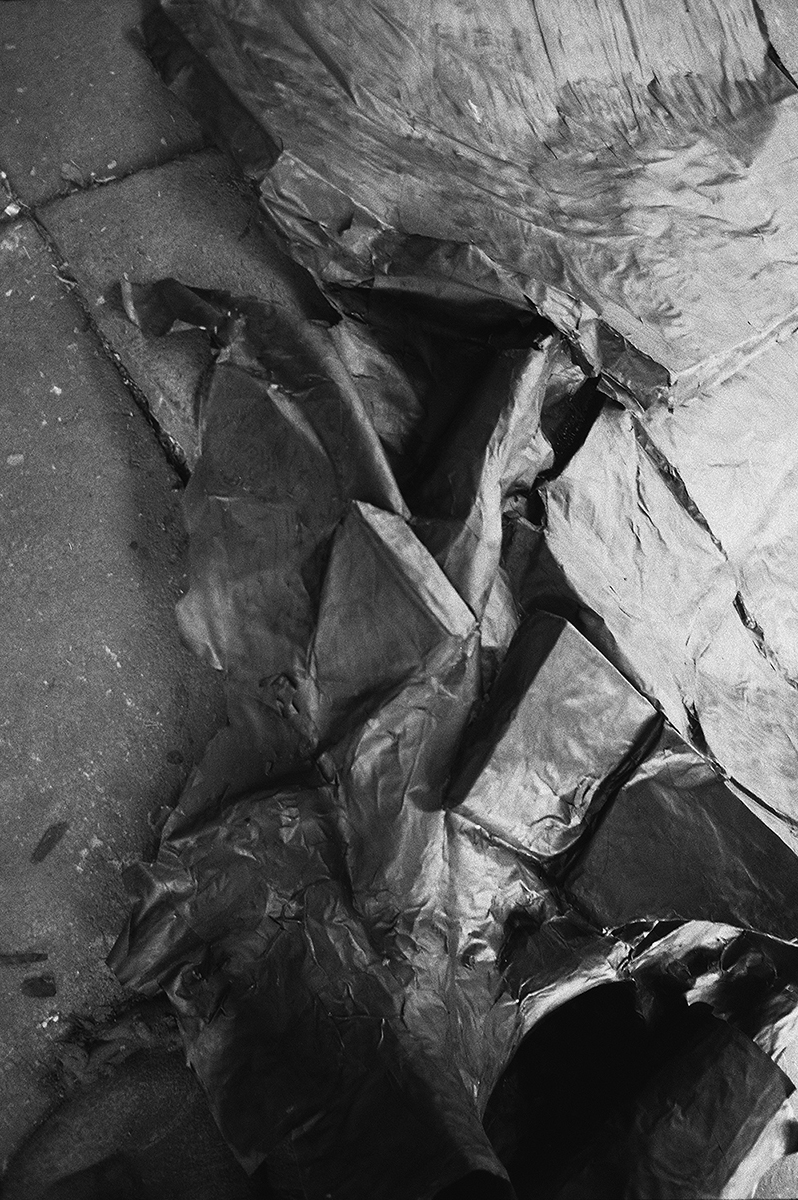
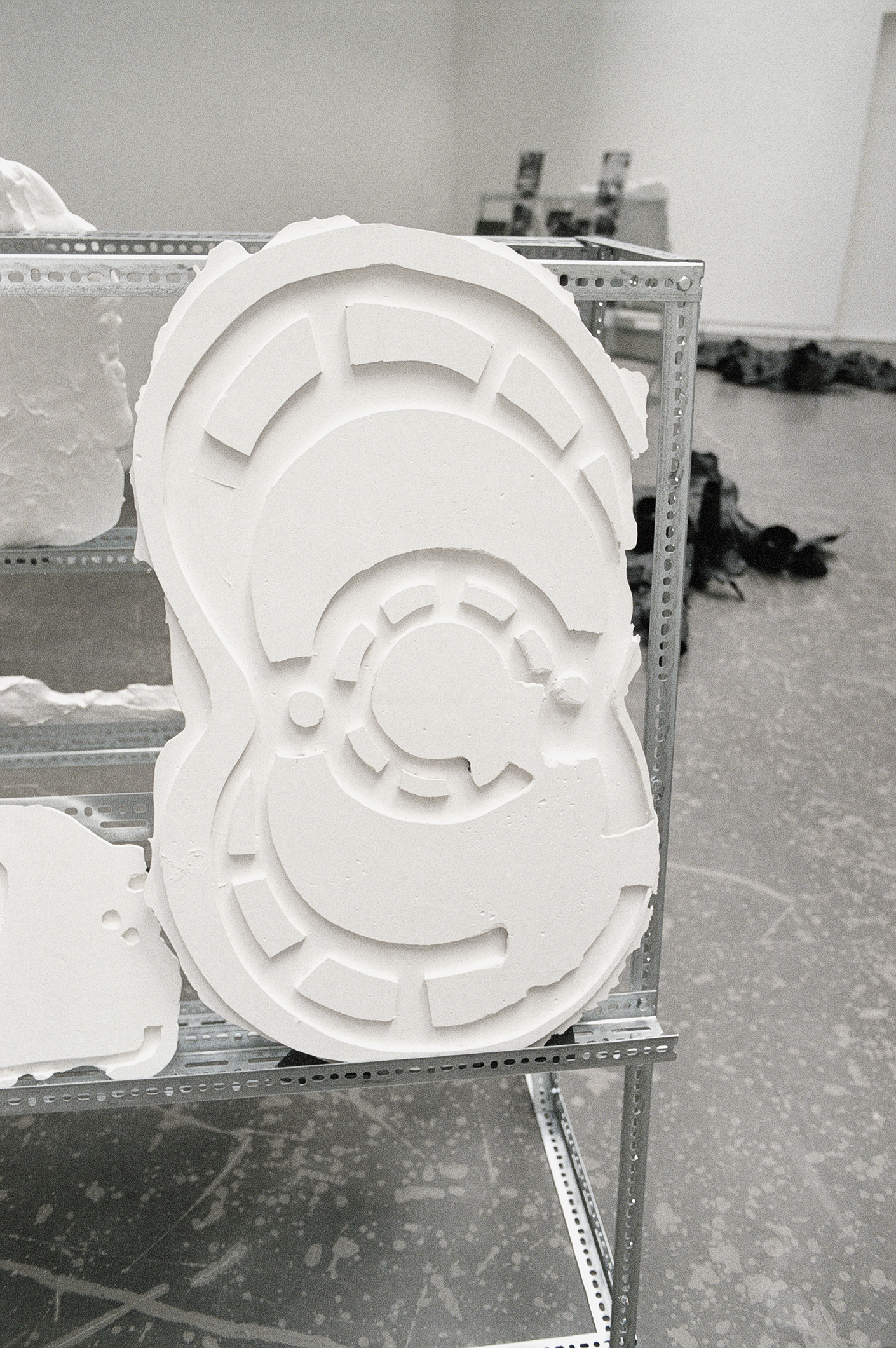
Detail: Lost Magic Kingdoms Paolozzi, 2013
Plaster Plate on metal grid
Installation view What we caught we threw away, what we didn’t catch we kept, CCA, Glasgow, 2013.
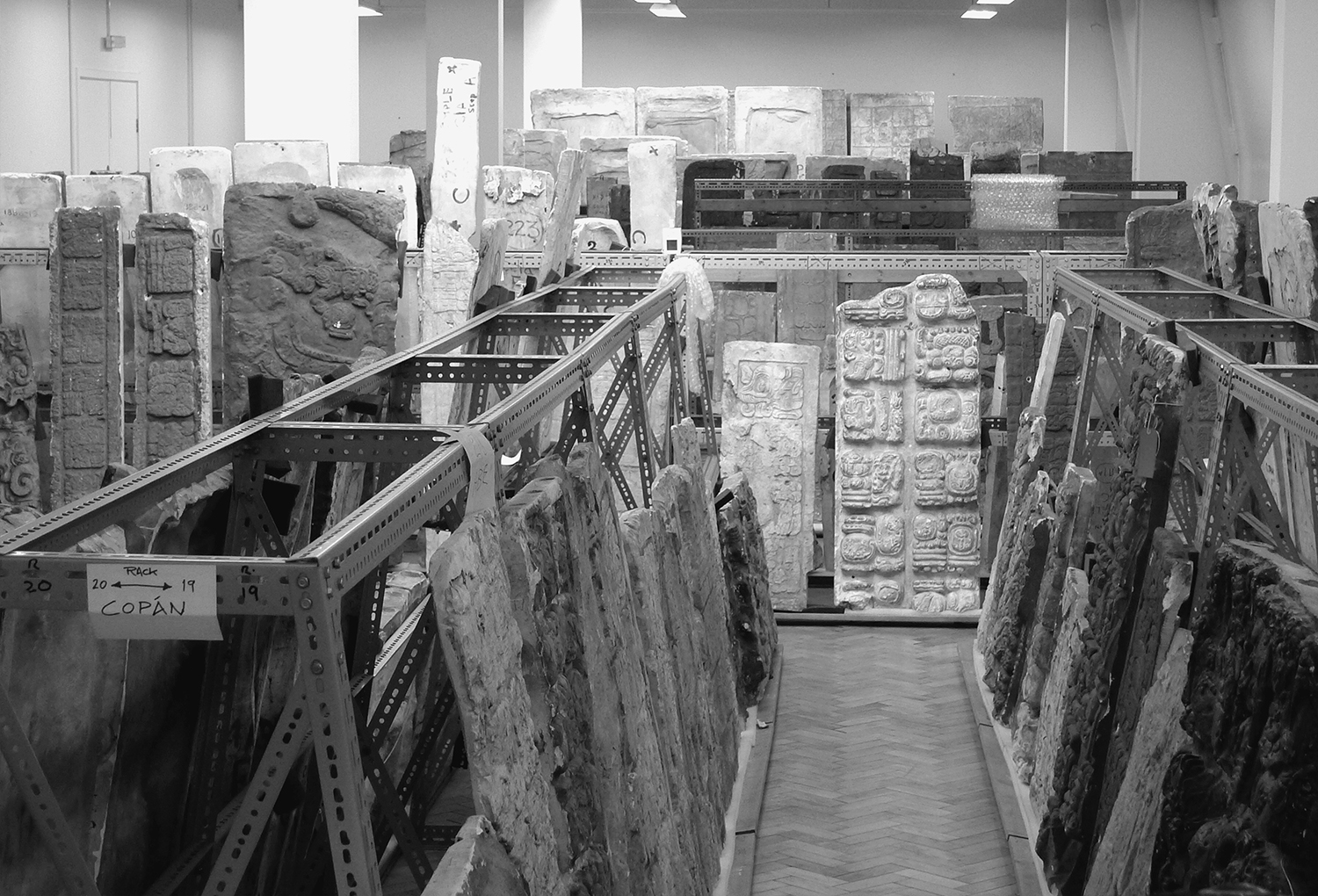
View of the Alfred Maudslay casts and molds collection. Storage facility,
British Museum, London, 2013
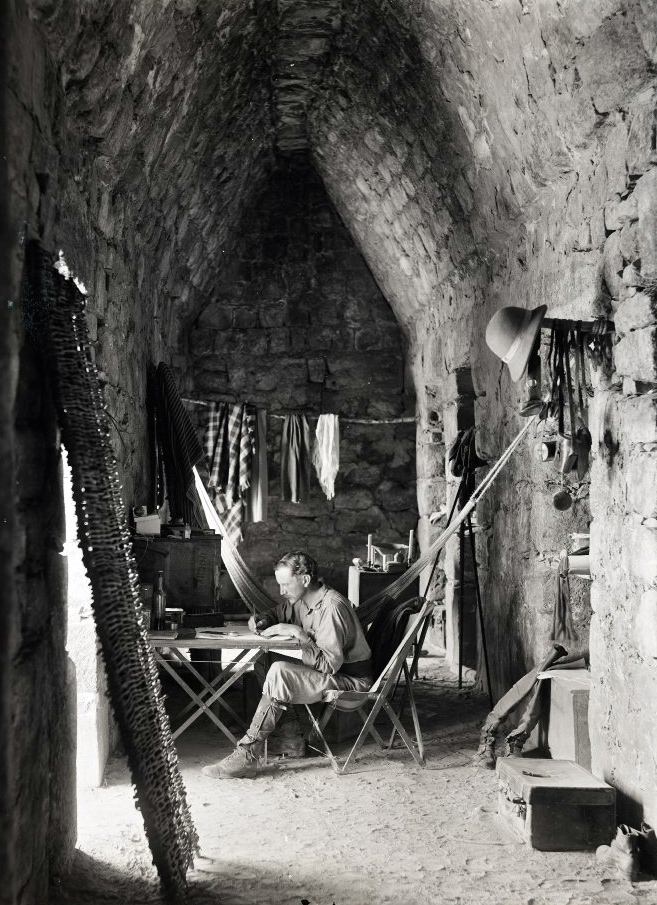
Alfred Percival Maudslay in Chichen Itzá, Guatemala, 1889
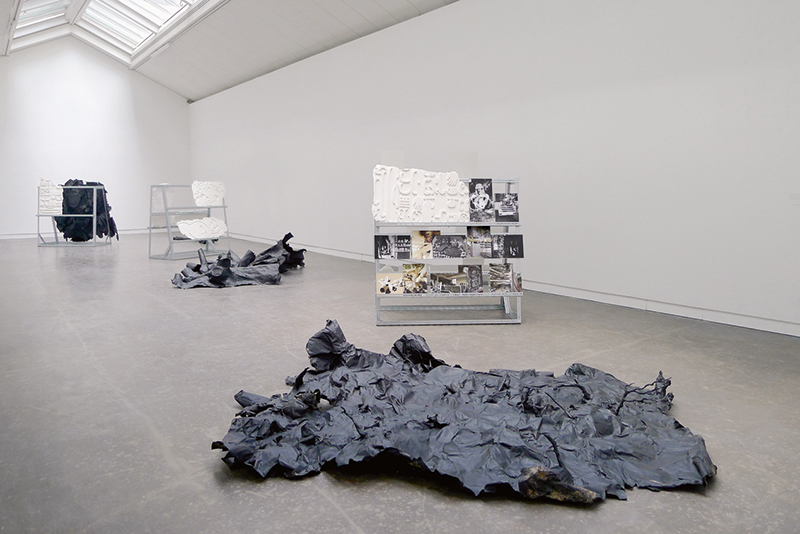
Installation view What we caught we threw away, what we didn’t catch we kept, CCA, Glasgow, 2013.
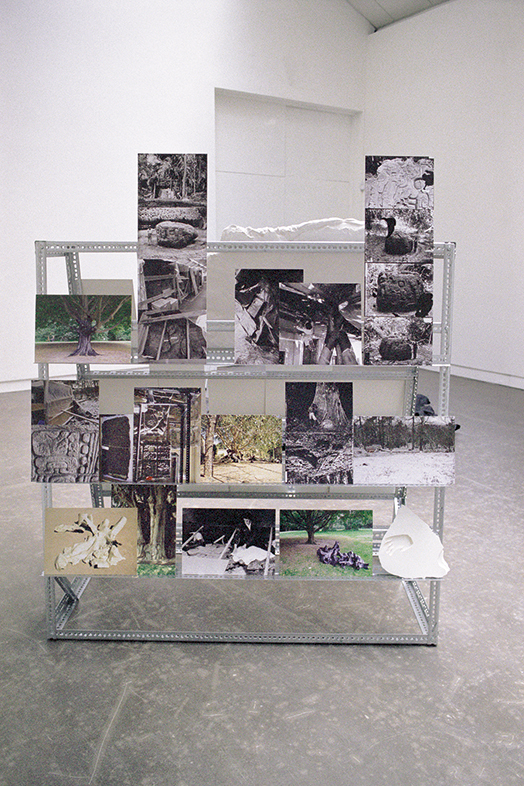
Detail: Stelae Storage, 2013
Metal structure, two plaster plates, 28 inkjet prints mounted on cardboard
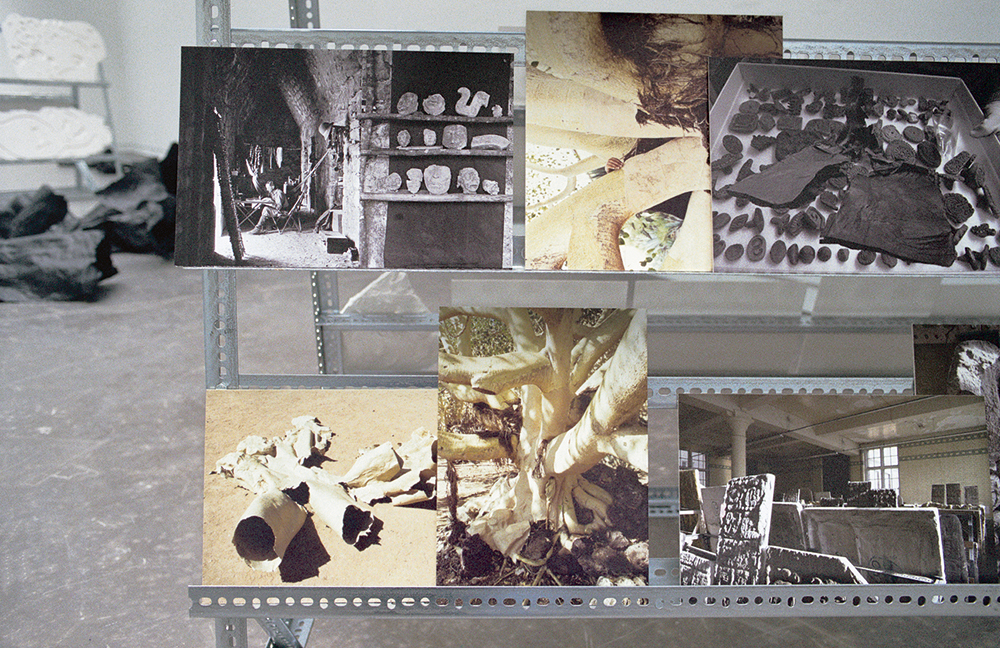
Detail: Stelae Storage, 2013
Metal structure, two plaster plates, 28 inkjet prints mounted on cardboard
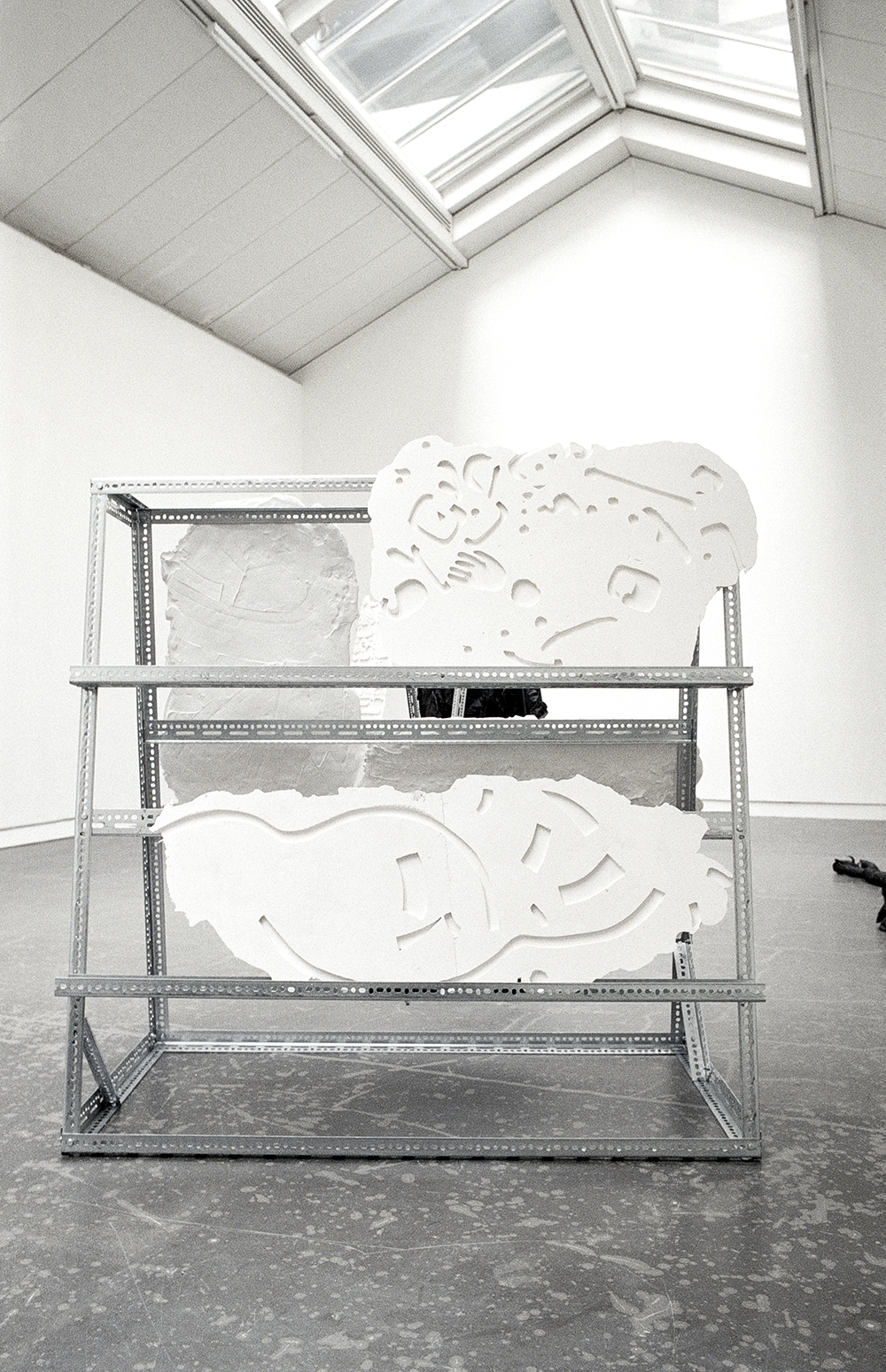
Lost Magic Kingdoms Paolozzi, 2013
Plaster Plate on metal grid
Installation view What we caught we threw away, what we didn’t catch we kept, CCA, Glasgow, 2013.
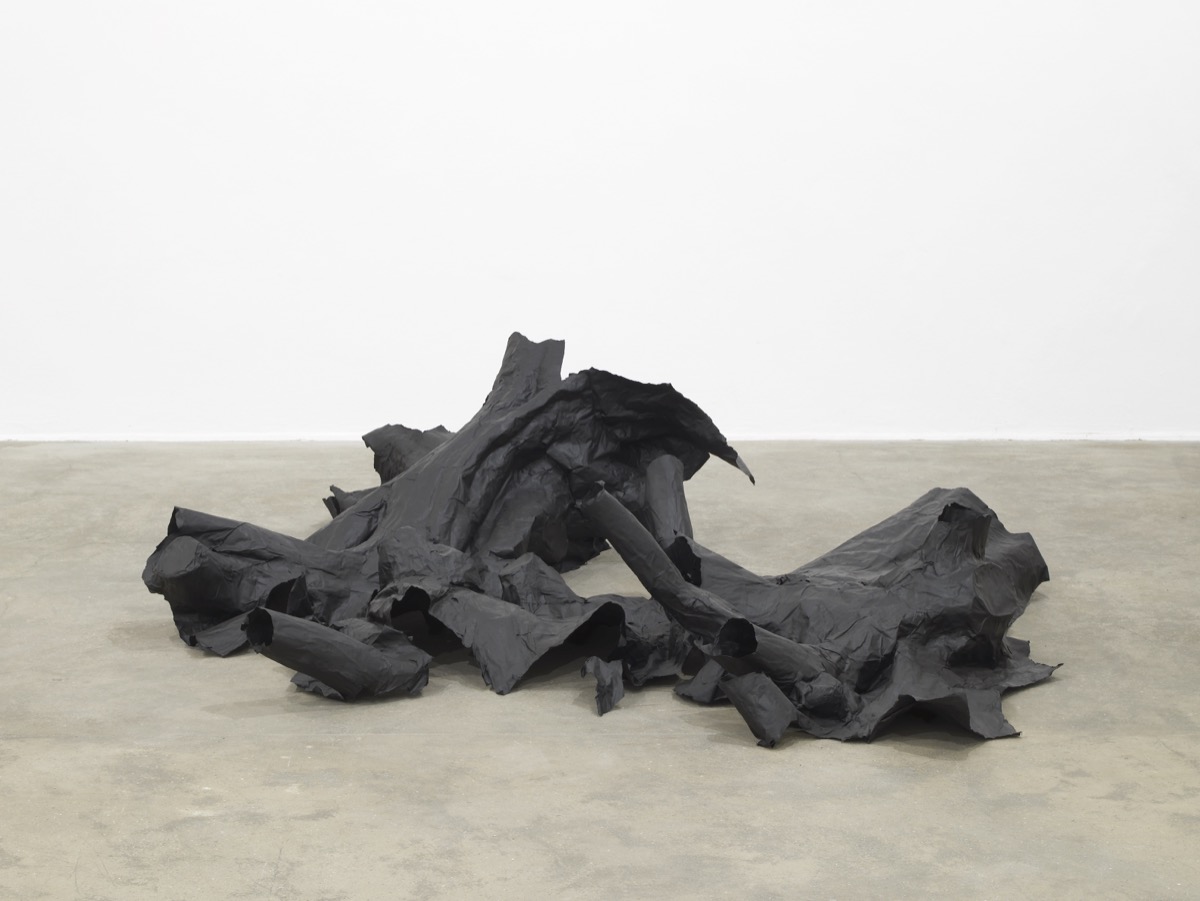
Tree Trap Berlin, 2011
Paper Squeeze, cotton paper.
Installation view What we caught we threw away, what we didn‘t catch we kept, Chisenhale Gallery, London, UK, 2013.
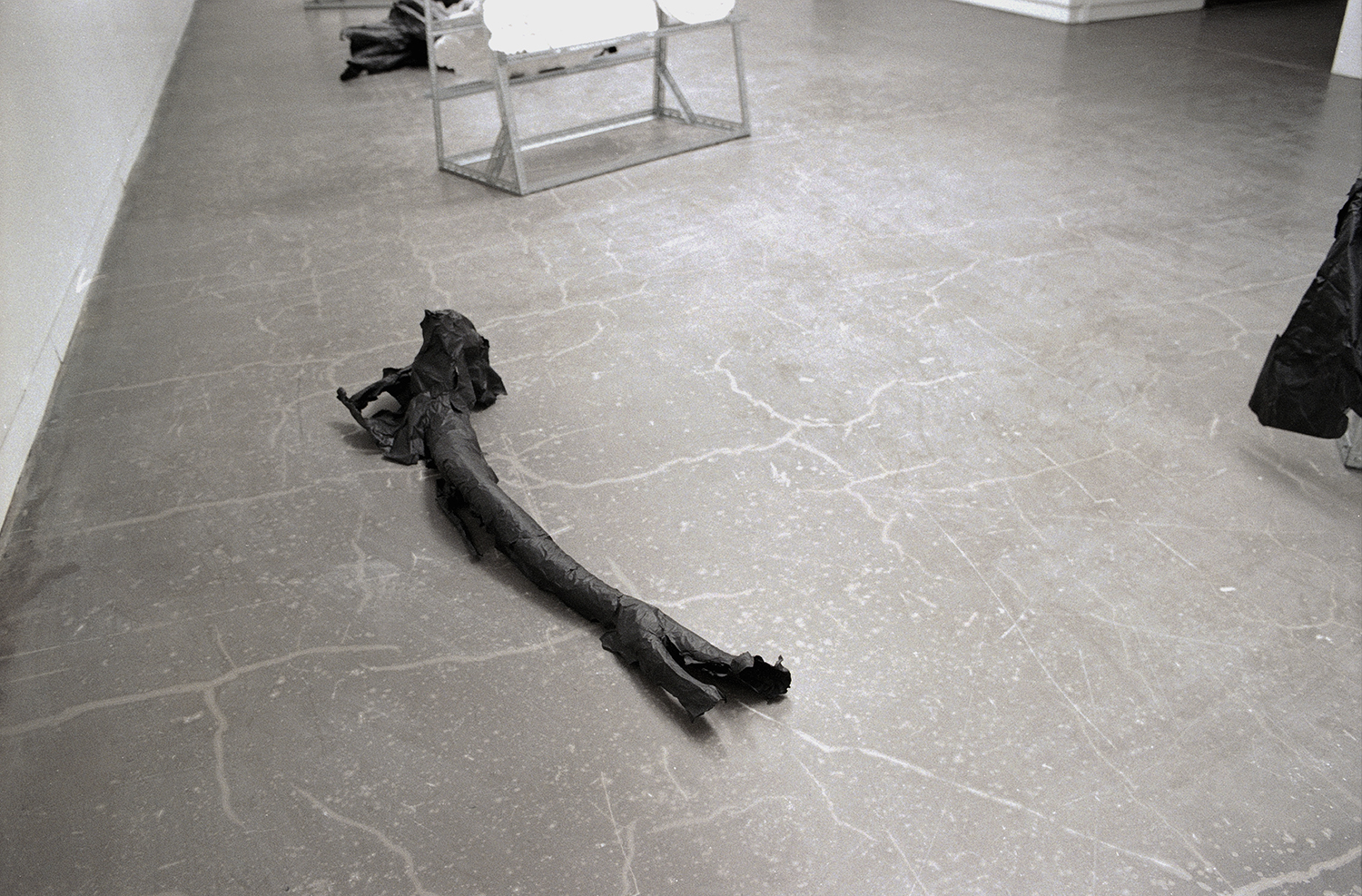
Tree Trap Cove Park, 2012
Paper Squeeze, cotton paper. 190 x 30 x 40 cm
Cove Park, Scotland, UK
Installation view What we caught we threw away, what we didn’t catch we kept, CCA, Glasgow, 2013.
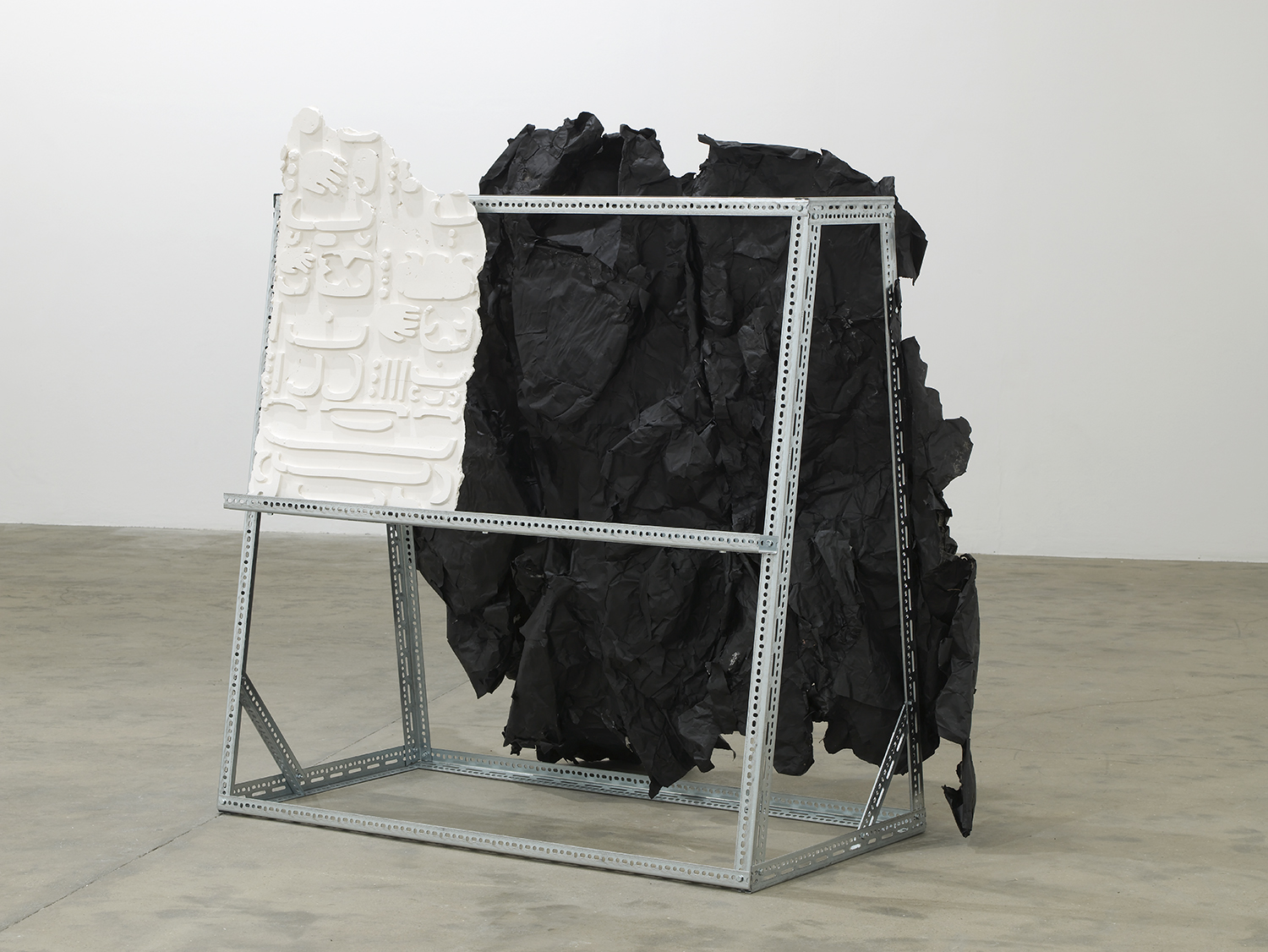
Quiriguá Stela, 2012
Plaster plate, paper squeeze. cotton paper, metal structure
Installation view What we caught we threw away, what we didn‘t catch we kept, Chisenhale Gallery, London, UK, 2013.
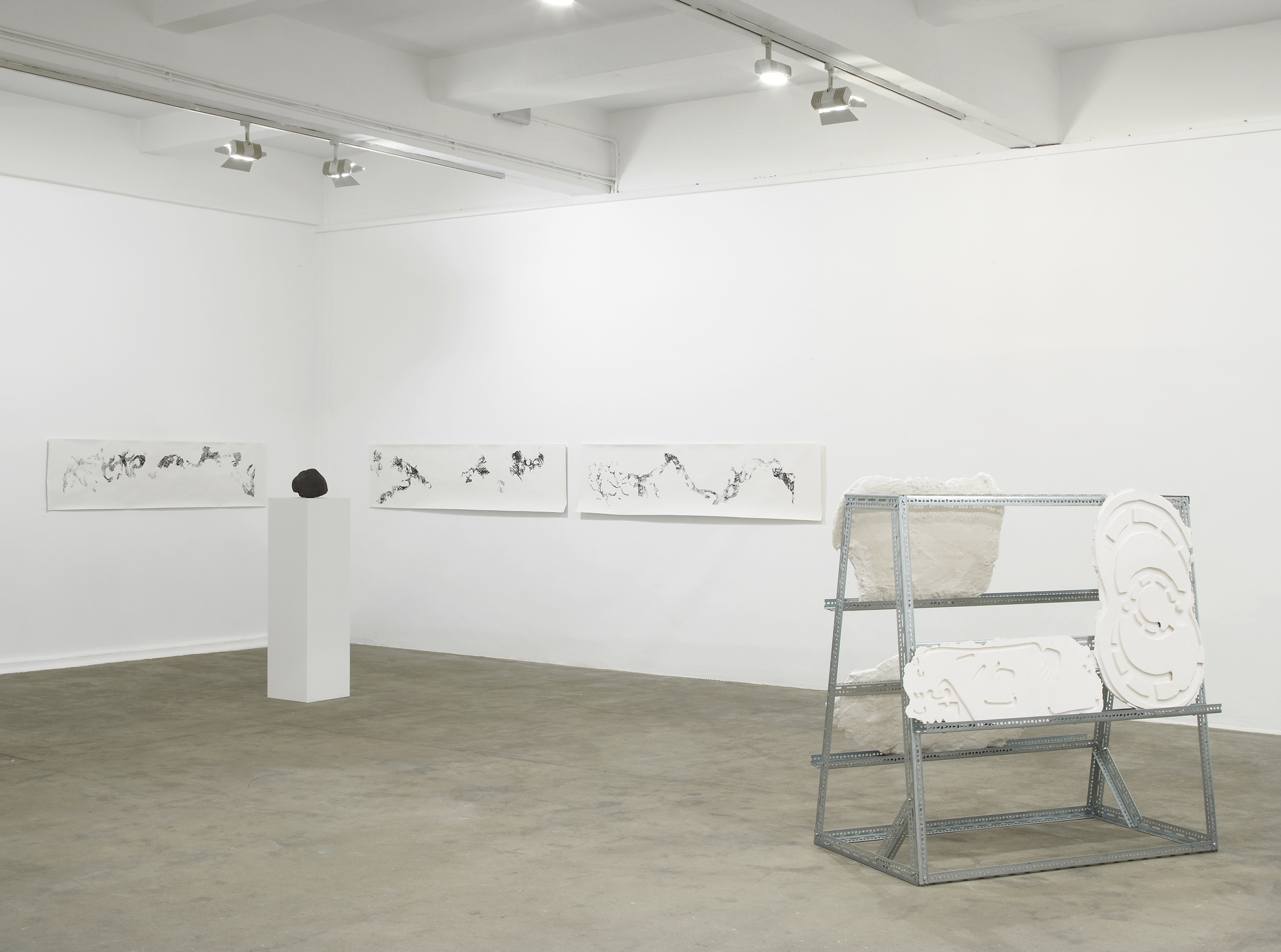
Zoomorph P, 2013 / Imprint Zoomorph P, 2013
Carved Briar wood root / Woodcut prints on cotton paper
Installation view What we caught we threw away, what we didn‘t catch we kept, Chisenhale Gallery, London, UK, 2013.
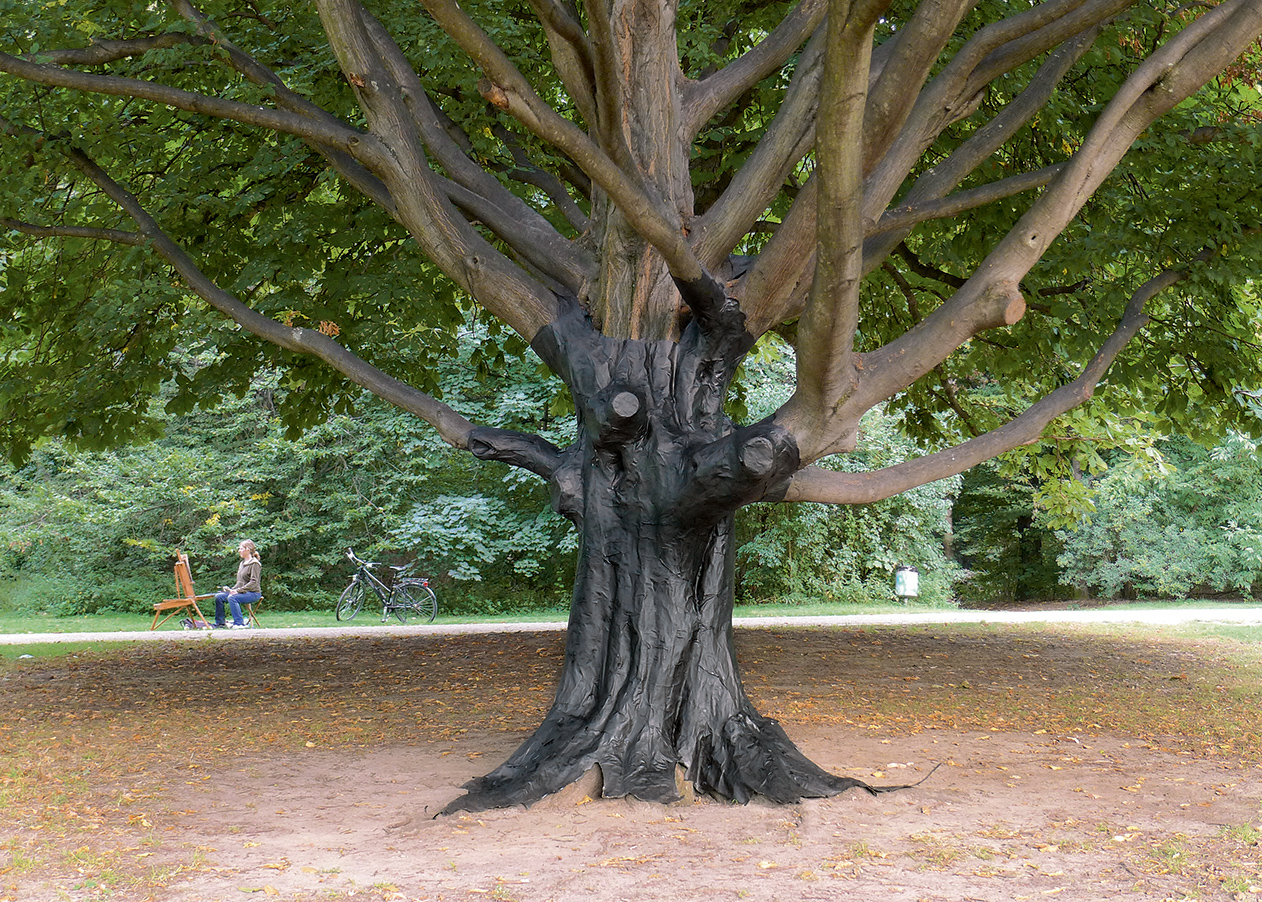
Photograph of the making of Tree
Trap Berlin,
2013
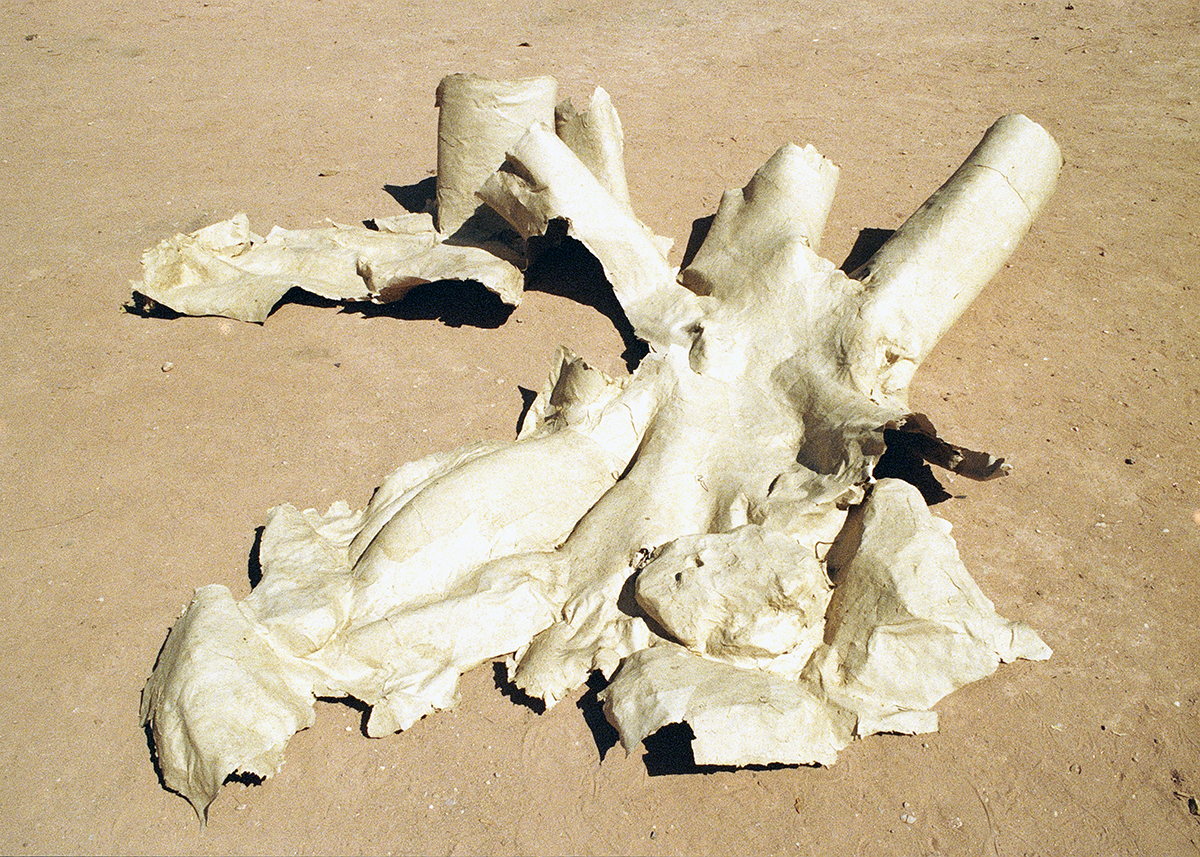
Tree Trap Oaxaca, 2012
Paper squeeze, wool and cotton paper
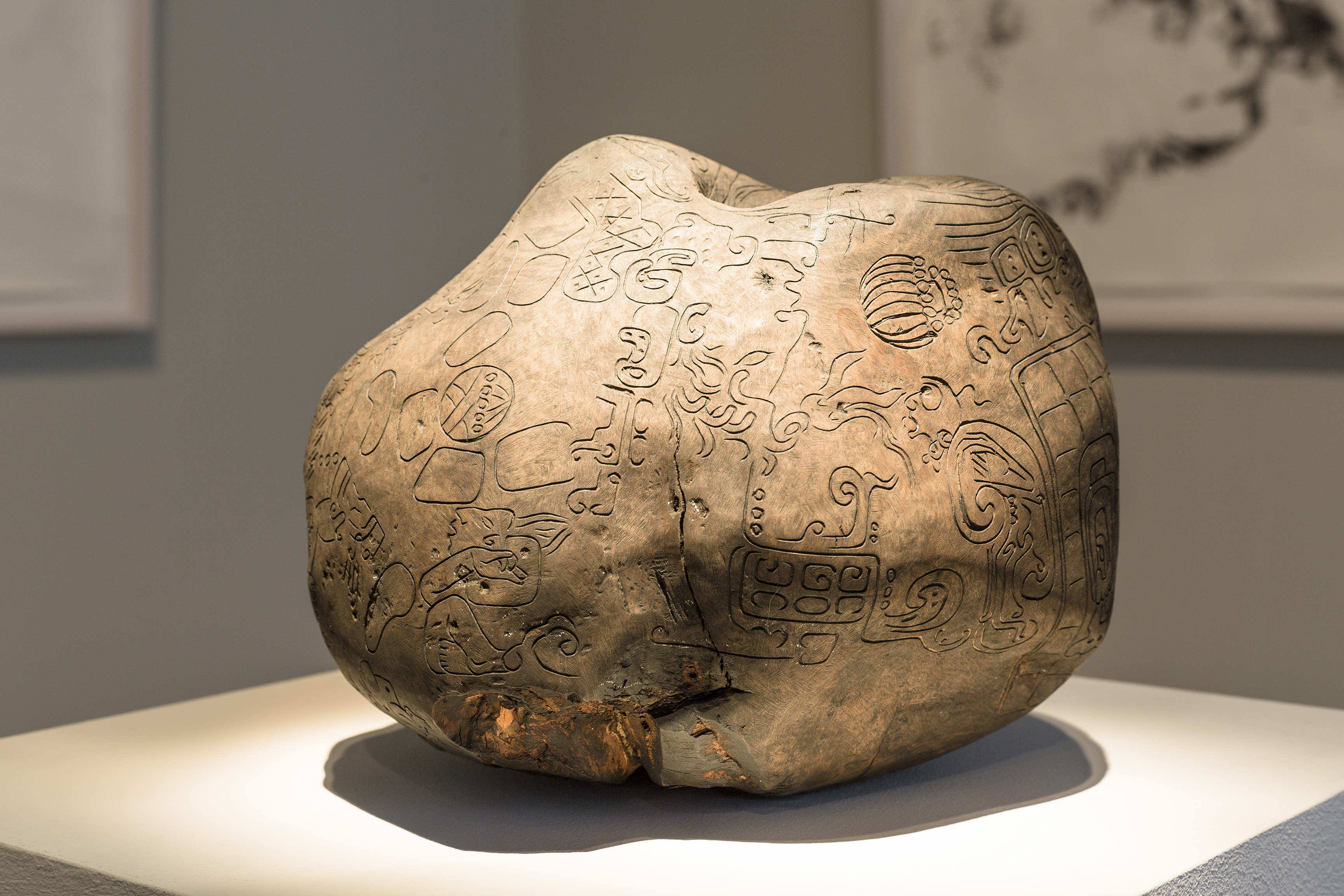
Zoomorph P, 2013
Carved Briar wood root
Installation view You have time to show yourself before other eyes, 8th Berlin Biennale for Contemporary Art, KW Institute for Contemporary Art, Berlin, 2014.

Imprint Zoomorph P -a,b,c, 2013
Woodcut prints on cotton paper.
Each 240 x 55 cm
You have time to show yourself before other eyes
8th Berlin Biennale for Contemporary Art, KW Institute for Contemporary Art, Berlin
May 29 – August 3 2014
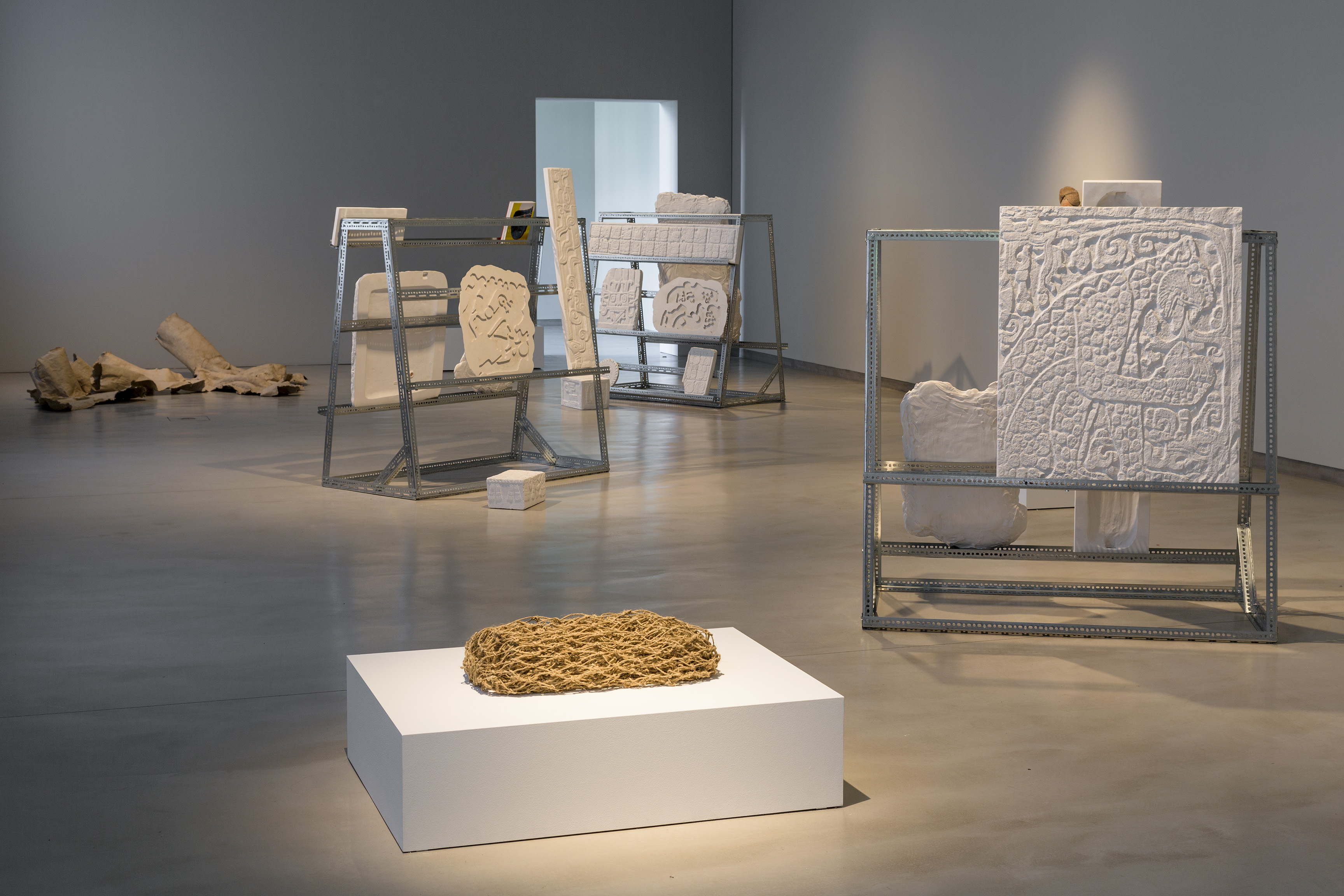
Installation view You have time to show yourself before other eyes, 8th Berlin Biennale for Contemporary Art, KW Institute for Contemporary Art, Berlin, 2014.
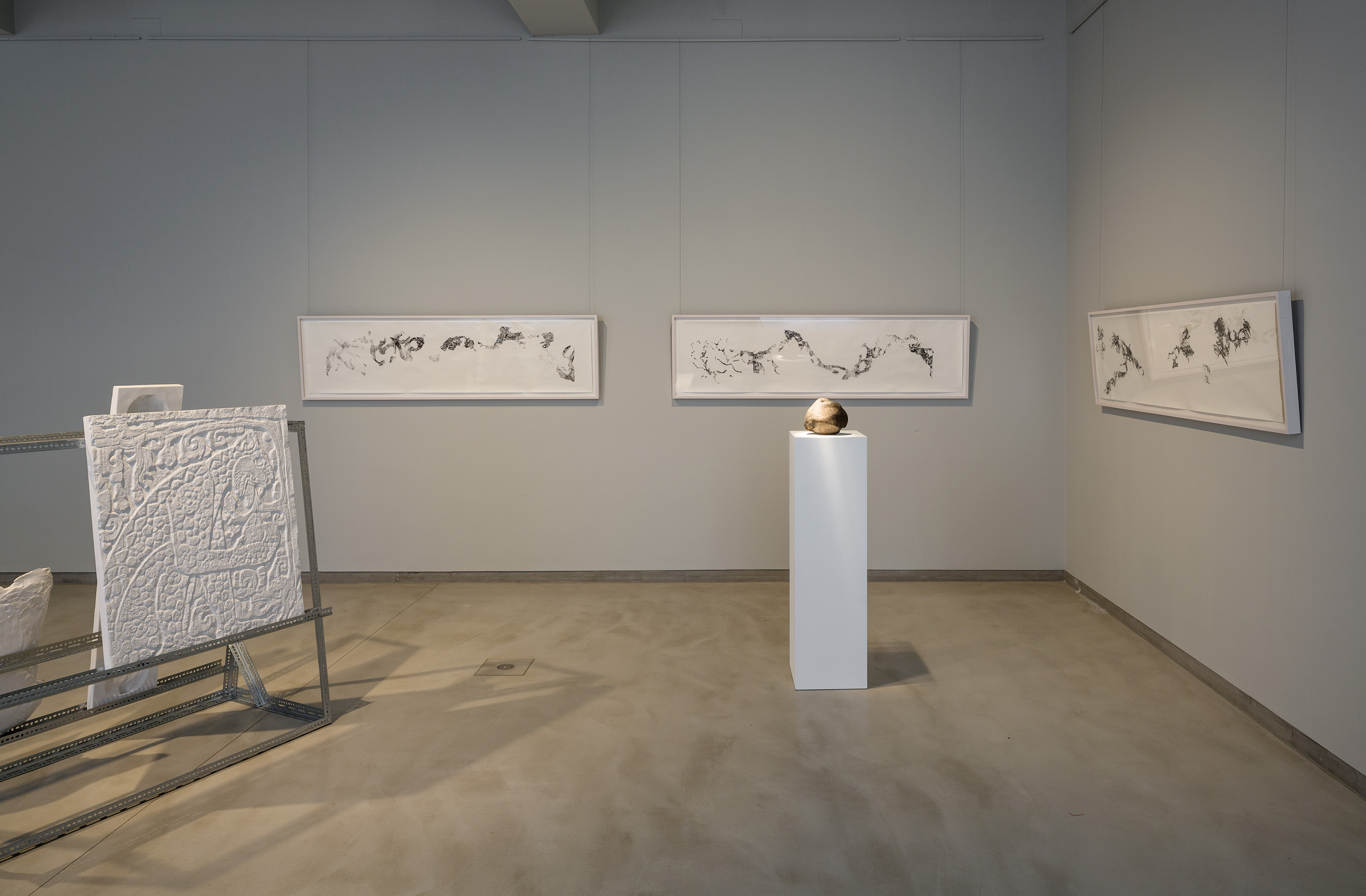
Installation view You have time to show yourself before other eyes, 8th Berlin Biennale for Contemporary Art, KW Institute for Contemporary Art, Berlin, 2014.
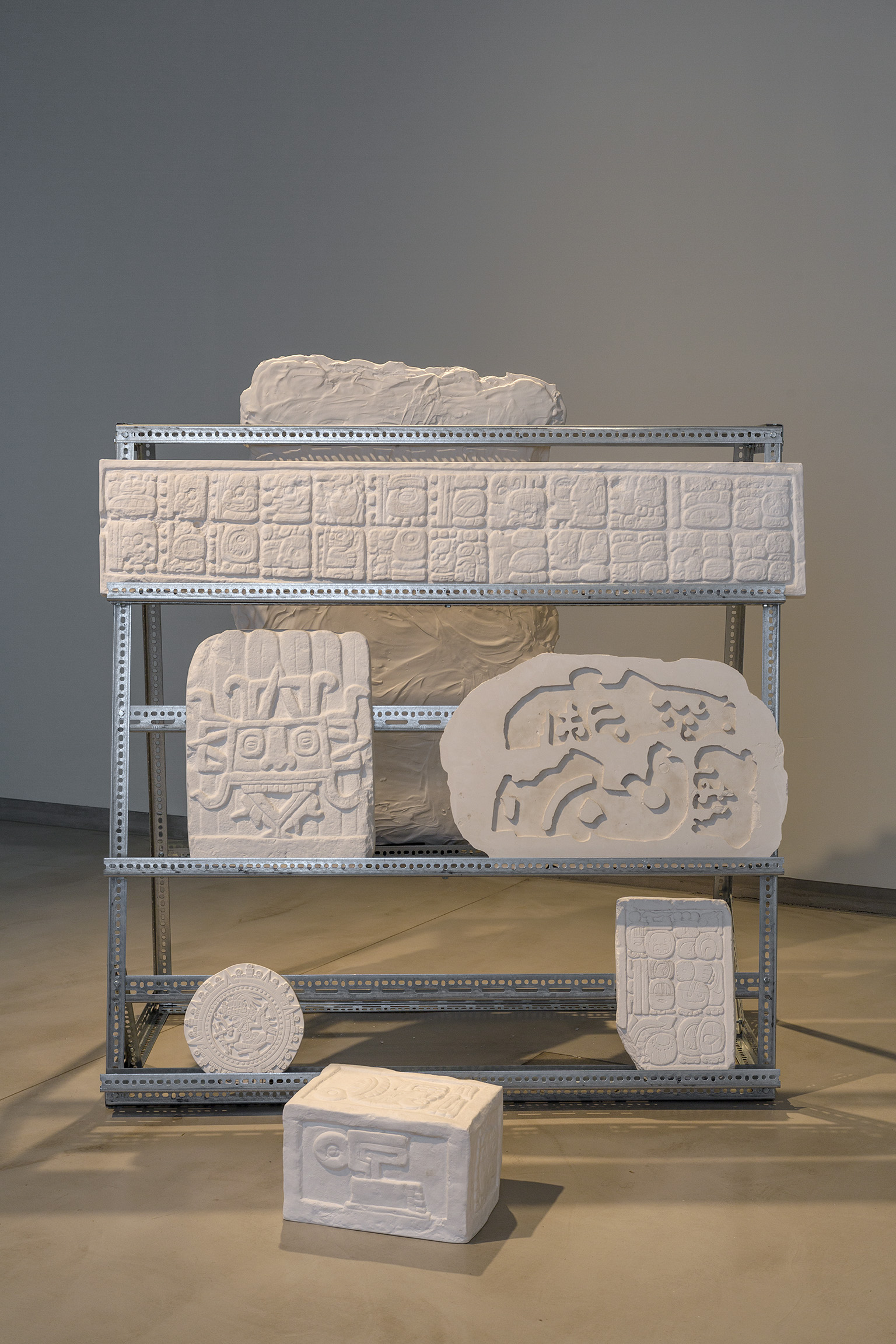
Hieroglyph Storage, 2014
Metal structure, 7 white plaster pieces
Installation view You have time to show yourself before other eyes, 8th Berlin Biennale for Contemporary Art, KW Institute for Contemporary Art, Berlin, 2014.
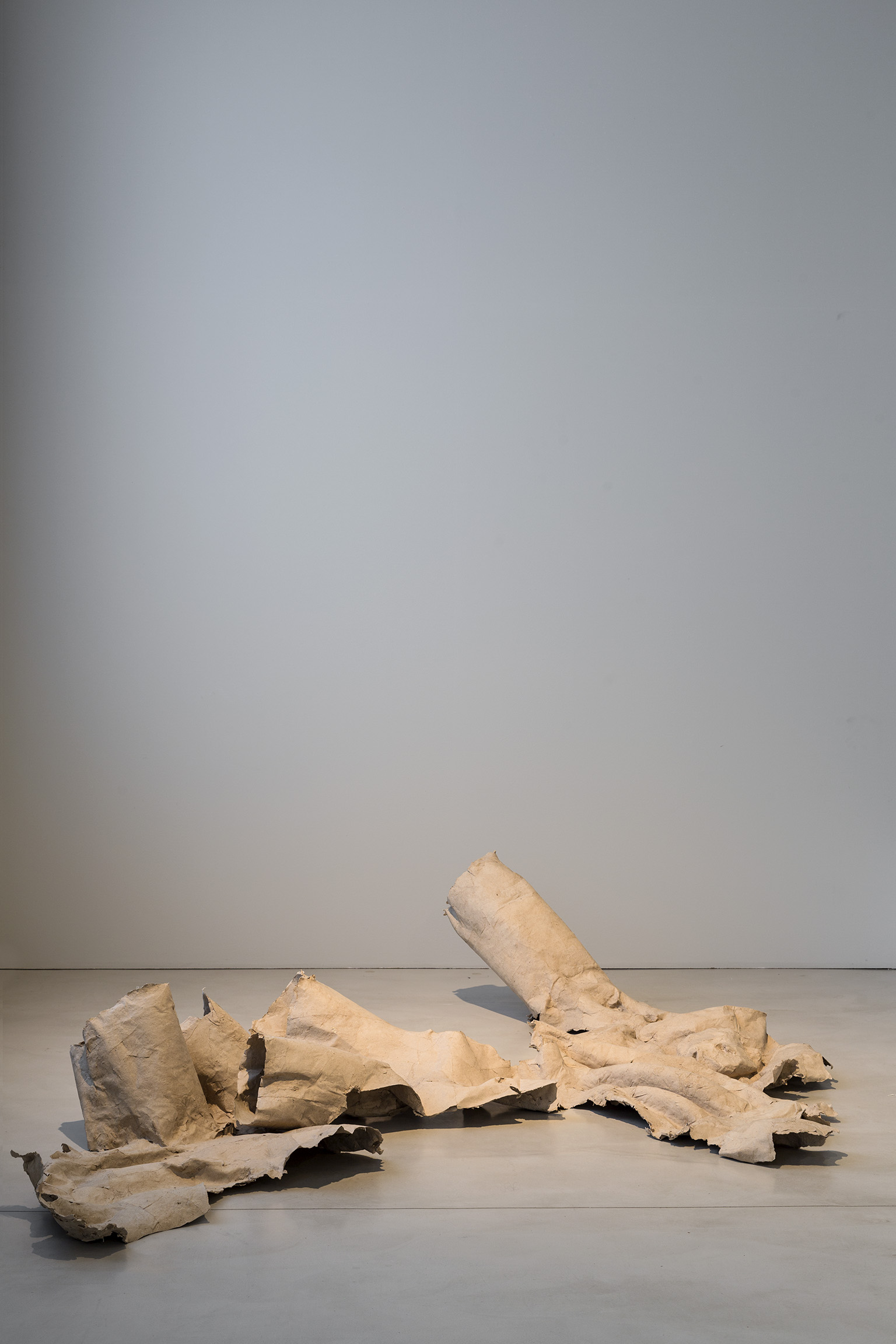
Tree Trap Oaxaca, 2013
Paper squeeze, wool and cotton paper
Installation view You have time to show yourself before other eyes, 8th Berlin Biennale for Contemporary Art, KW Institute for Contemporary Art, Berlin, 2014.
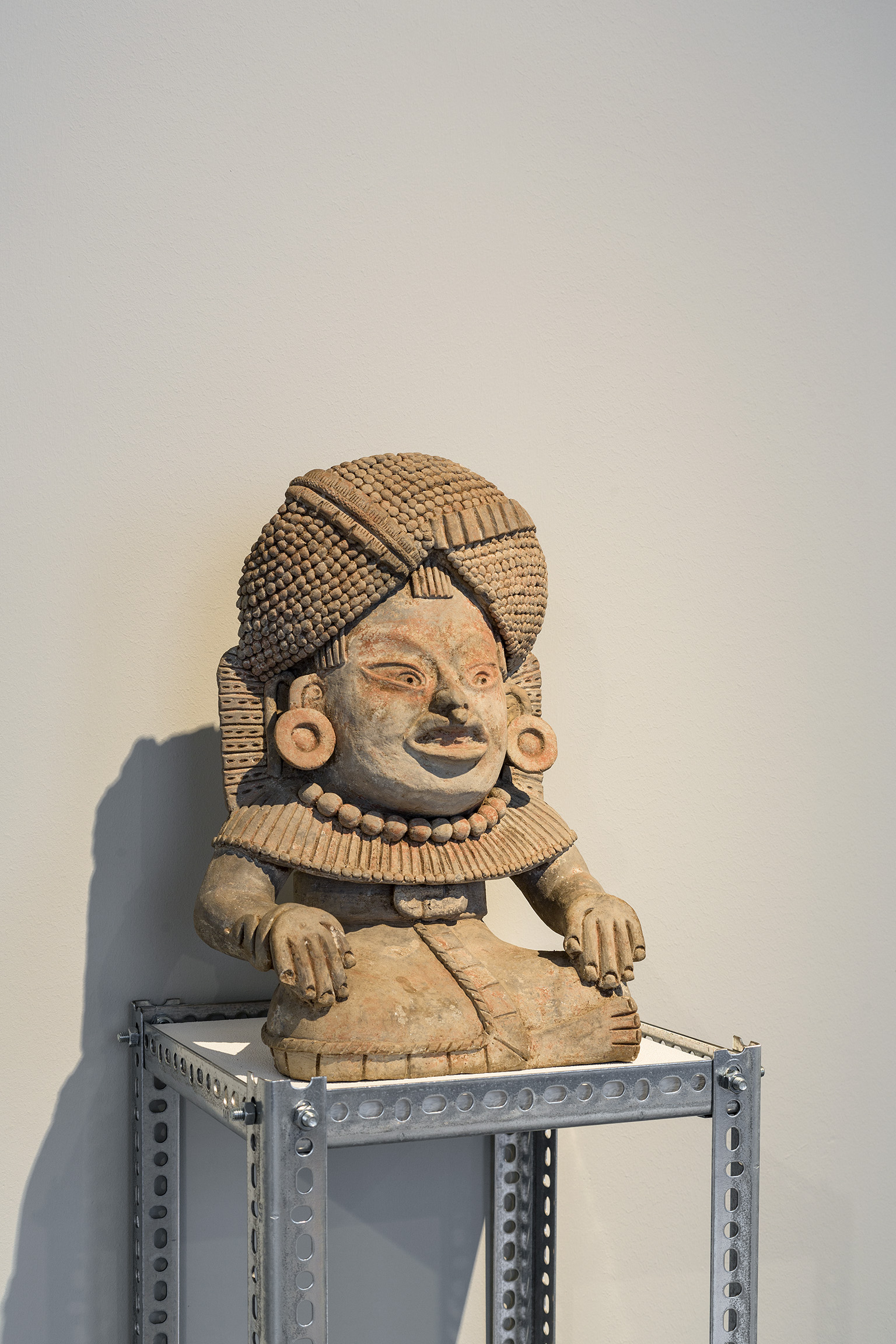
Detail: You have time to show yourself before other eyes, 8th Berlin Biennale for Contemporary Art, KW Institute for Contemporary Art, Berlin, 2014.
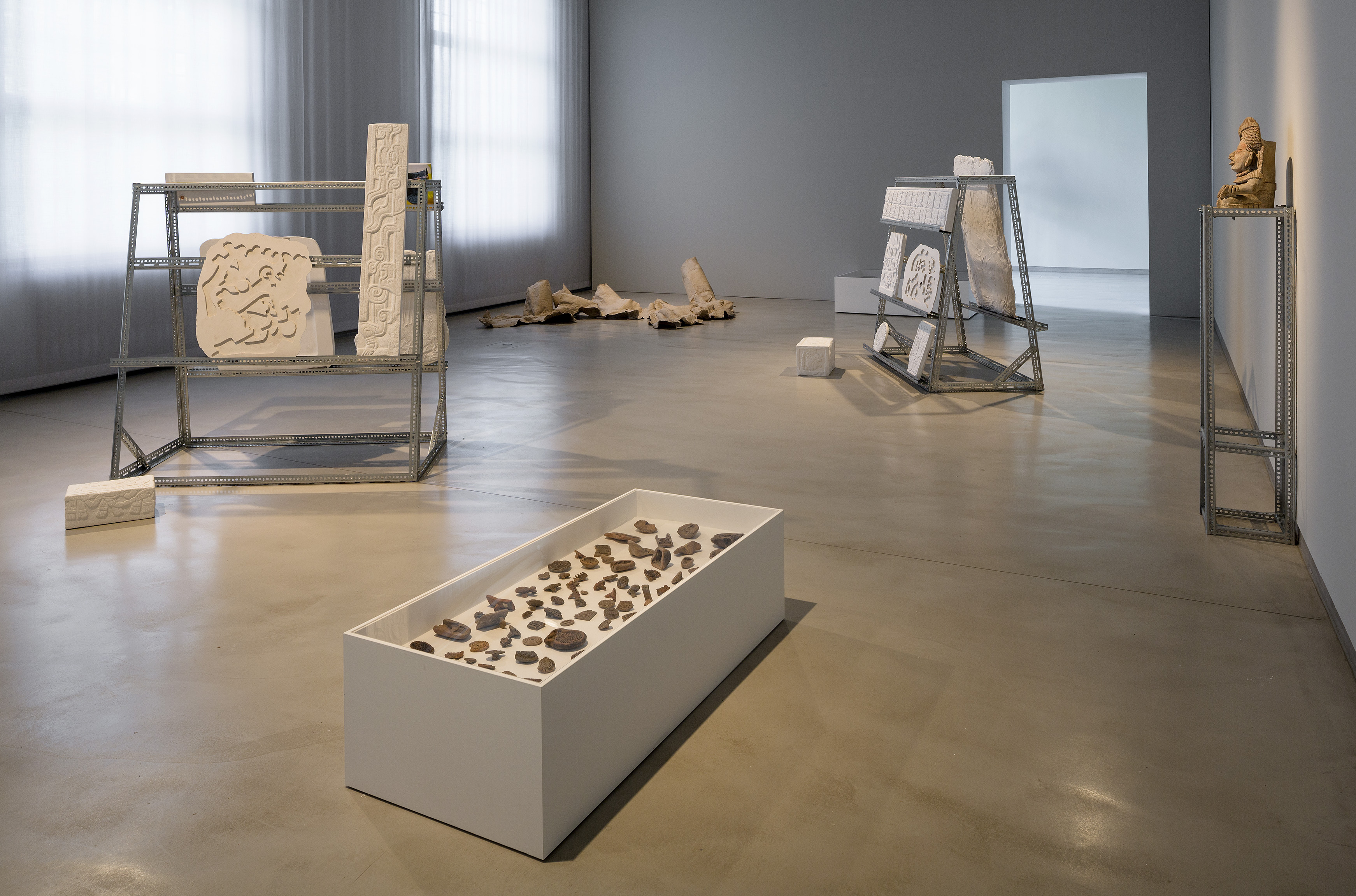
Installation view You have time to show yourself before other eyes, 8th Berlin Biennale for Contemporary Art, KW Institute for Contemporary Art, Berlin, 2014.
Between
you
and the image
of you
that reaches
me
Museum of Latin American Art (MOLA), Long Beach California, US
Curated by Cecilia Fajardo Hil
2010
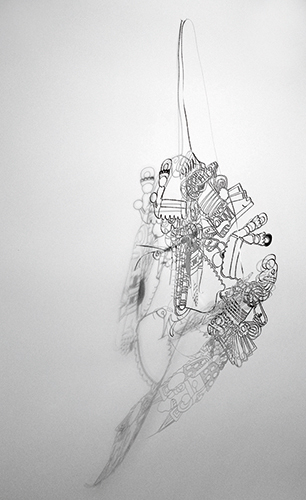
Between you and the image of you that reaches me takes as its starting point the mythology and the history of two archaeological pieces representing Coatlicue and Coyolxauhqui in Aztec mythology: deities of Death/Earth and the Moon, respectively.
Both pieces have a complex history, especially in relation to the series of spaces they have occupied – in the collective imagination, as well as in museums, basements, public squares, and presidential speeches.
Coatlicue had a daughter, Coyolxauhqui (the Moon), and four hundred sons (the stars). One day, Coatlicue becomes mysteriously pregnant, causing her daughter to become enraged and convince her brothers to plot murderous vengeance against their mother. Coatlicue, pregnant with the Sun (Huitzilopochtli), awaits his arrival patiently. When the Moon and the stars attempt to kill Coatlicue, the Sun springs from his mother’s womb to defend her. The figure of Coyolxauhqui is that of a di membered woman. Following this incident, her brother, the Sun, decapitates her and tosses her down a mountain. Her body is dispersed – arms over here, legs over there. The Sun is the victory of the new time: linear time that displaces circular time; a time of accumulation.
This story belongs to a circular time that operates through the destruction of what is created during the span of a day. The cycles are kept in motion by those who travel through time. Through the sacrifice of the Moon, the repetition of the cycle is guaranteed. A sculpture of Coyolxauhqui, dismembered from the myth, was found almost intact in the Zocalo (main square) of Mexico City in 1978. Separated from its time as well as from its quotidian cycle of sacrifice, it has landed in the hands of archaeologists, anthropologists, and politicians, who lean on it to explain the mestizo and fragmented nature of Mexico today.
Coatlicue and Coyolxauhqui, for a time left out of the orbit of social purpose, are presented in their abandonment as enigmas. Their secret symbol is the cemetery of the meaning-building machine. In linear time, in the time of the Sun, the reallocation of ruins is the hidden machinery of continuous change.
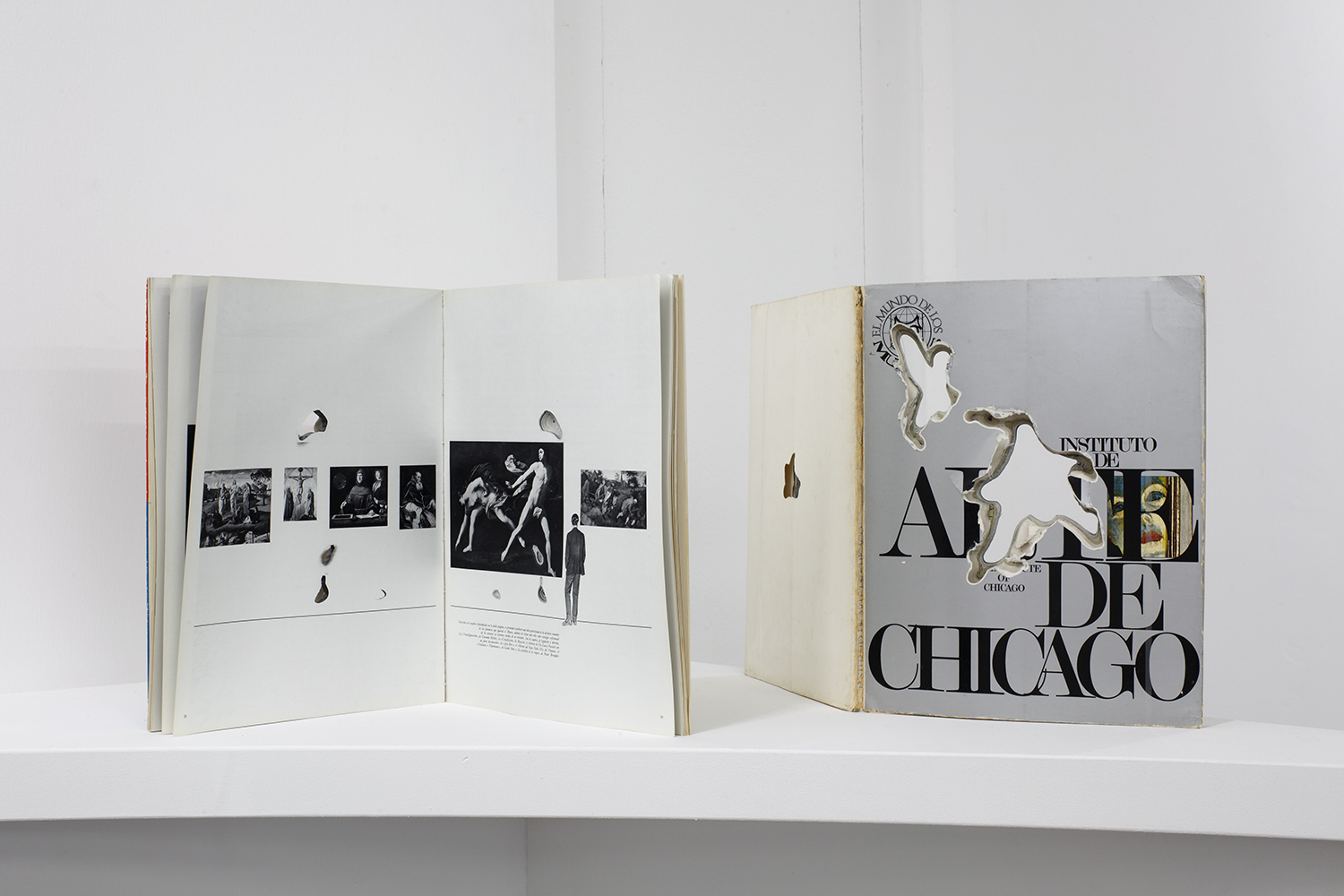
Do ut des, 2008
perforated book
Installation view ars viva 09/10: Geschichte/History, Kölnischer Kunstverein, Köln, 2010.
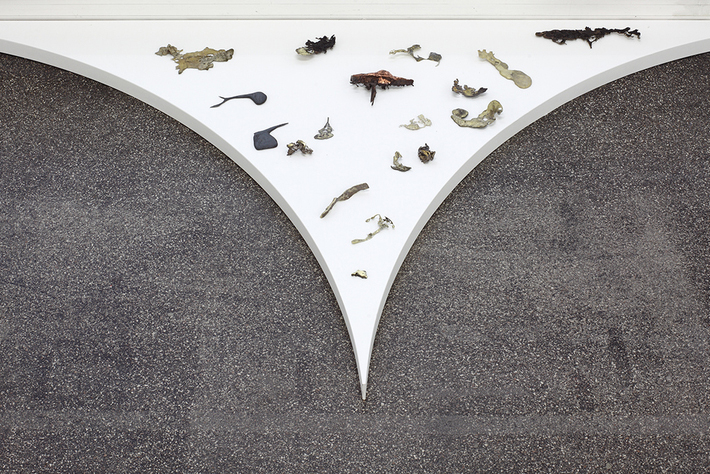
Stumbling Stones, 2009
Copper, aluminum, bronze
Installation view ars viva 09/10: Geschichte/History, Kölnischer Kunstverein, Köln, 2010.
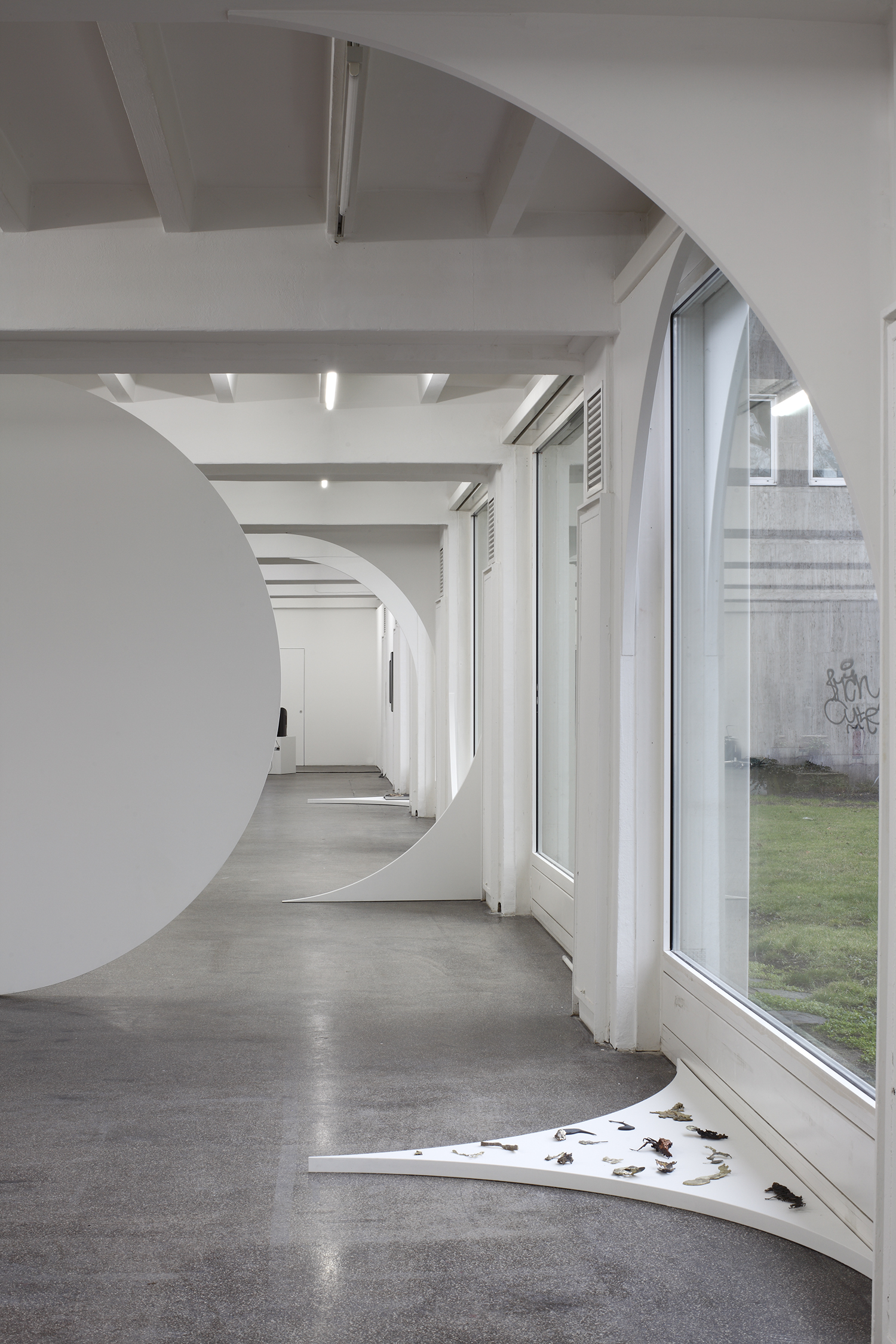
Installation view ars viva 09/10: Geschichte/History, Kölnischer Kunstverein, Köln, 2010.
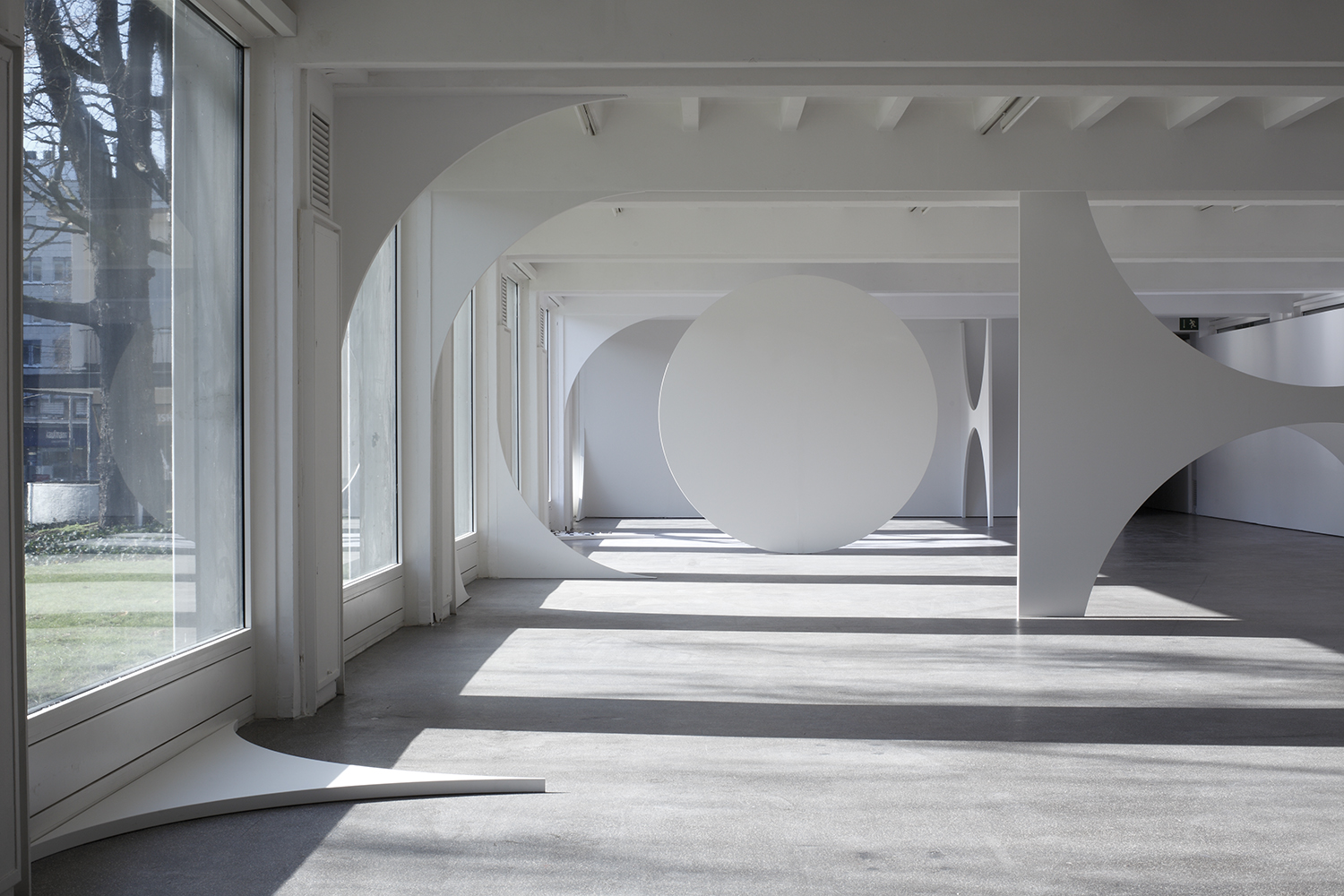
Do ut des II, I give that you may give back, 2009
site-specific installation with cutted wood
Installation view ars viva 09/10: Geschichte/History, Kölnischer Kunstverein, Köln 2010
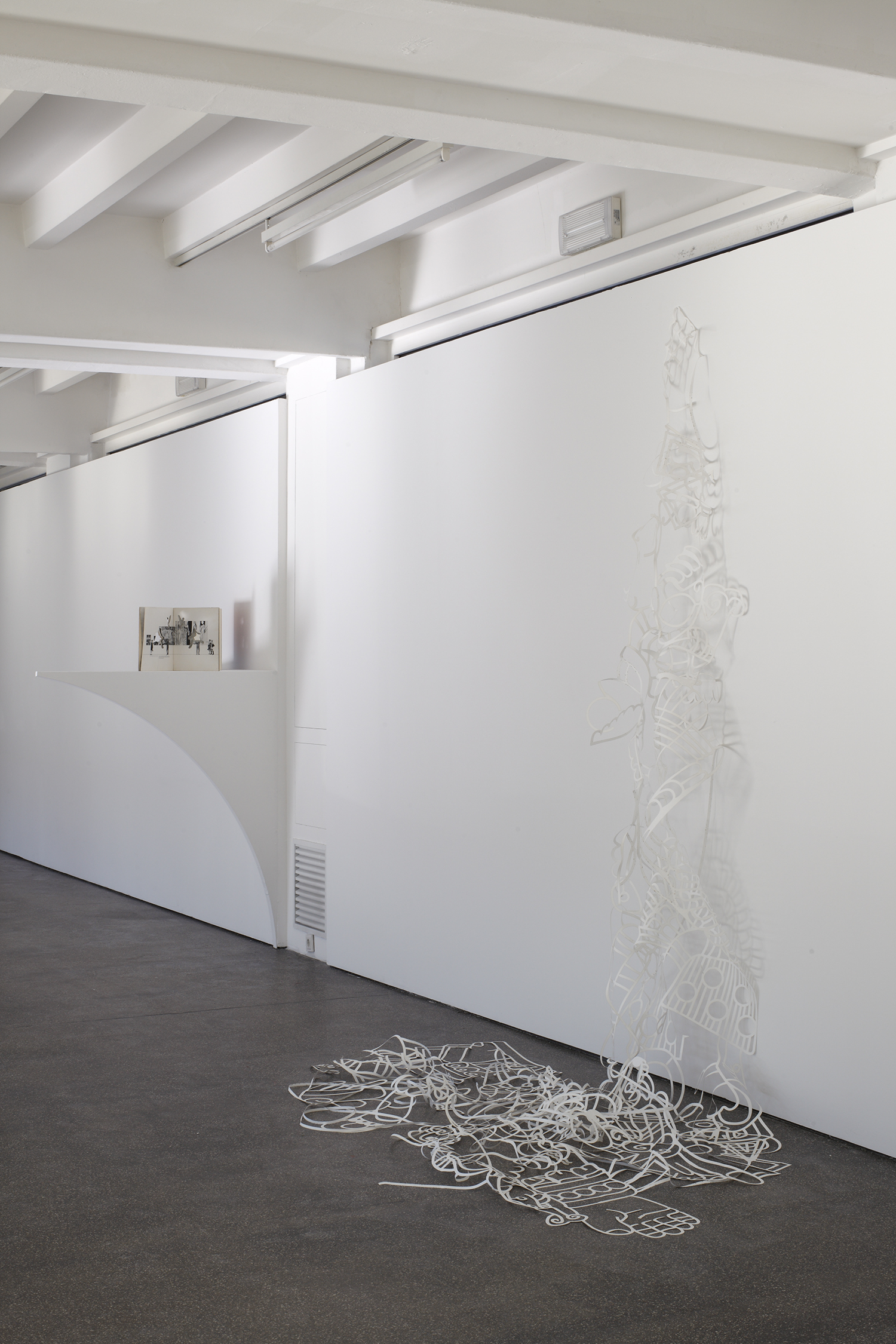
Installation view ars viva 09/10: Geschichte/History, Kölnischer Kunstverein, Köln, 2010.
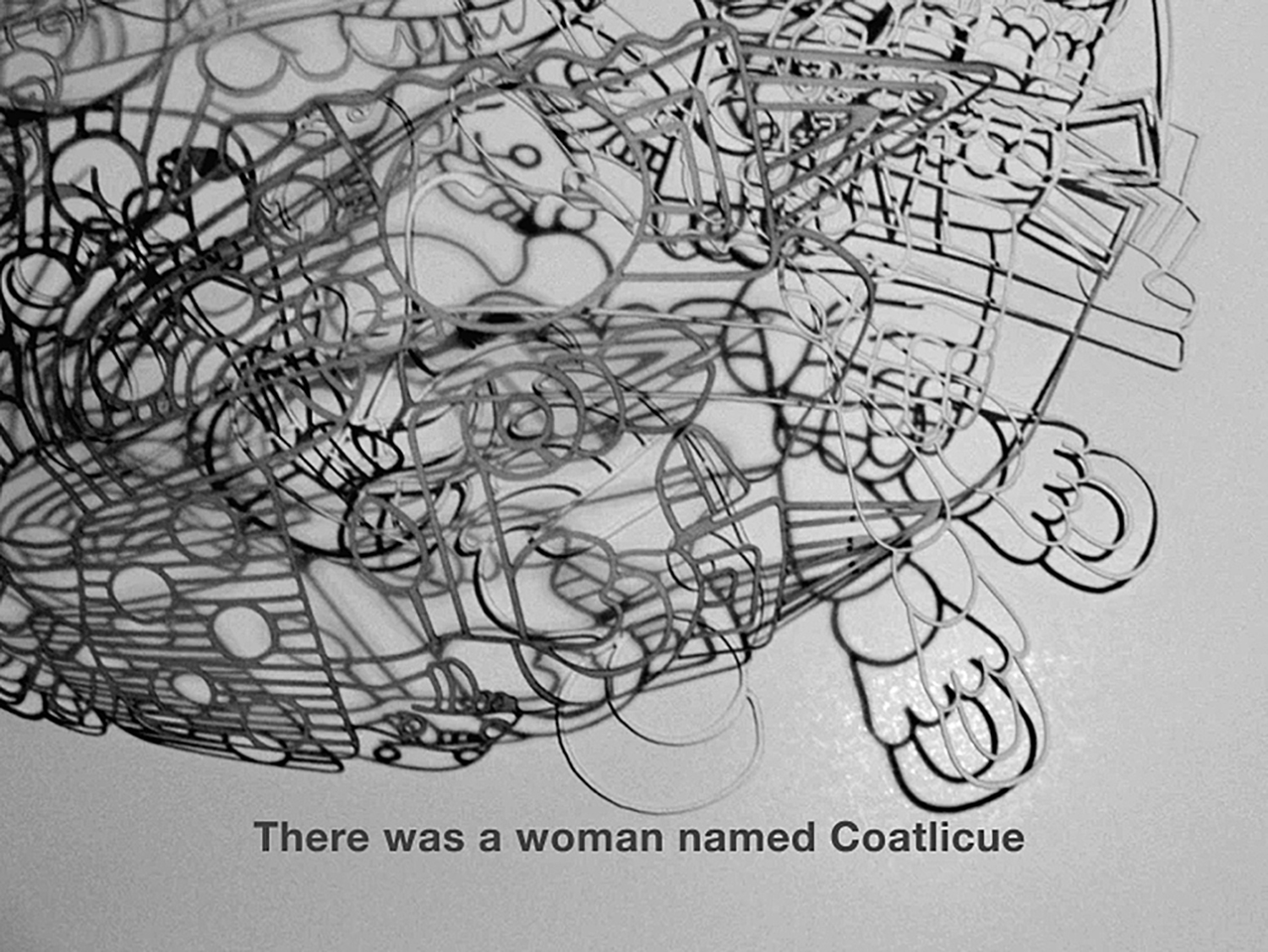
There is a space later in time where you are just a memory, 2010
Black and white, silent, 6min
Video Stills
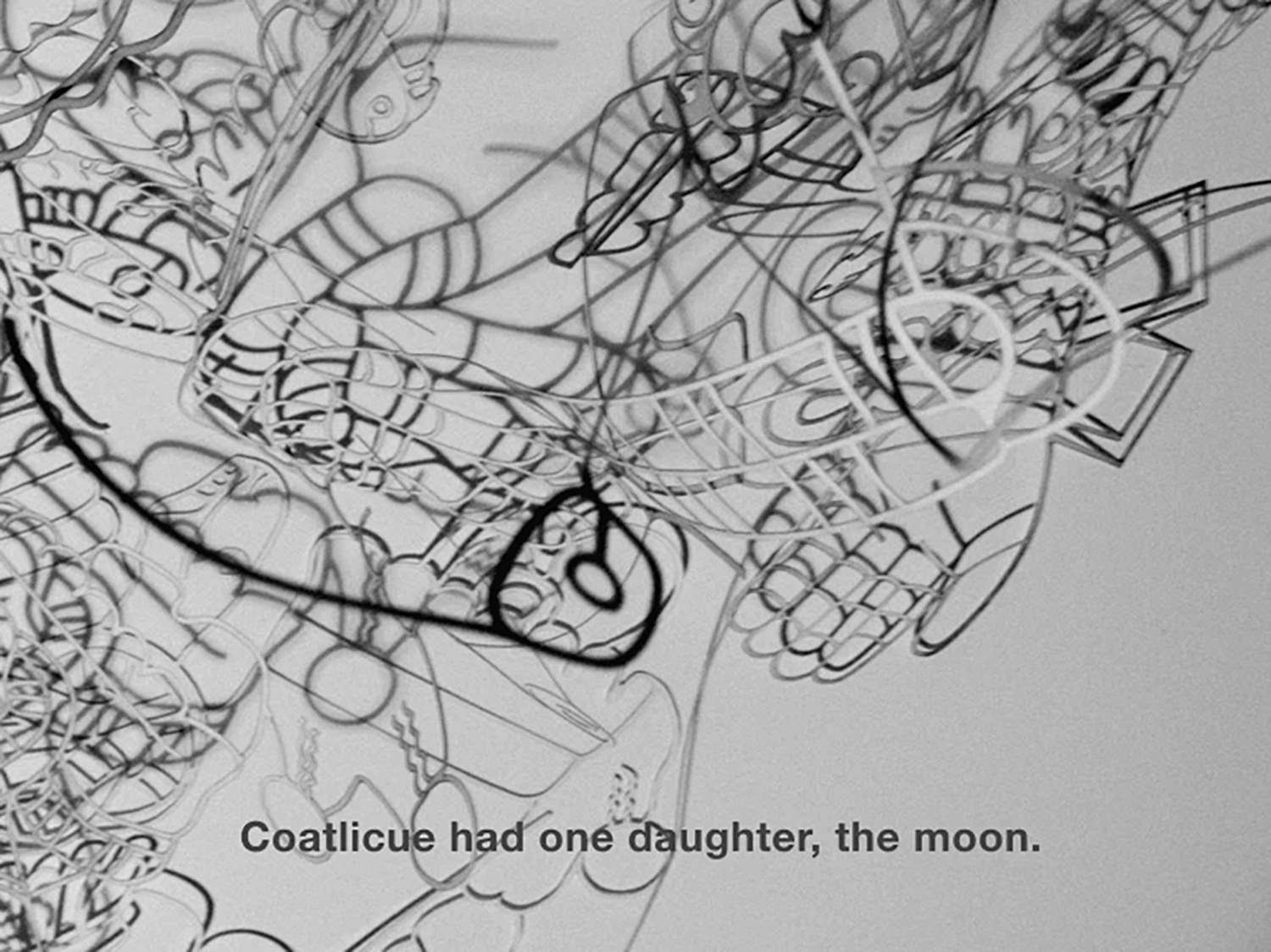
There is a space later in time where you are just a memory, 2010
Black and white, silent, 6min
Video Stills
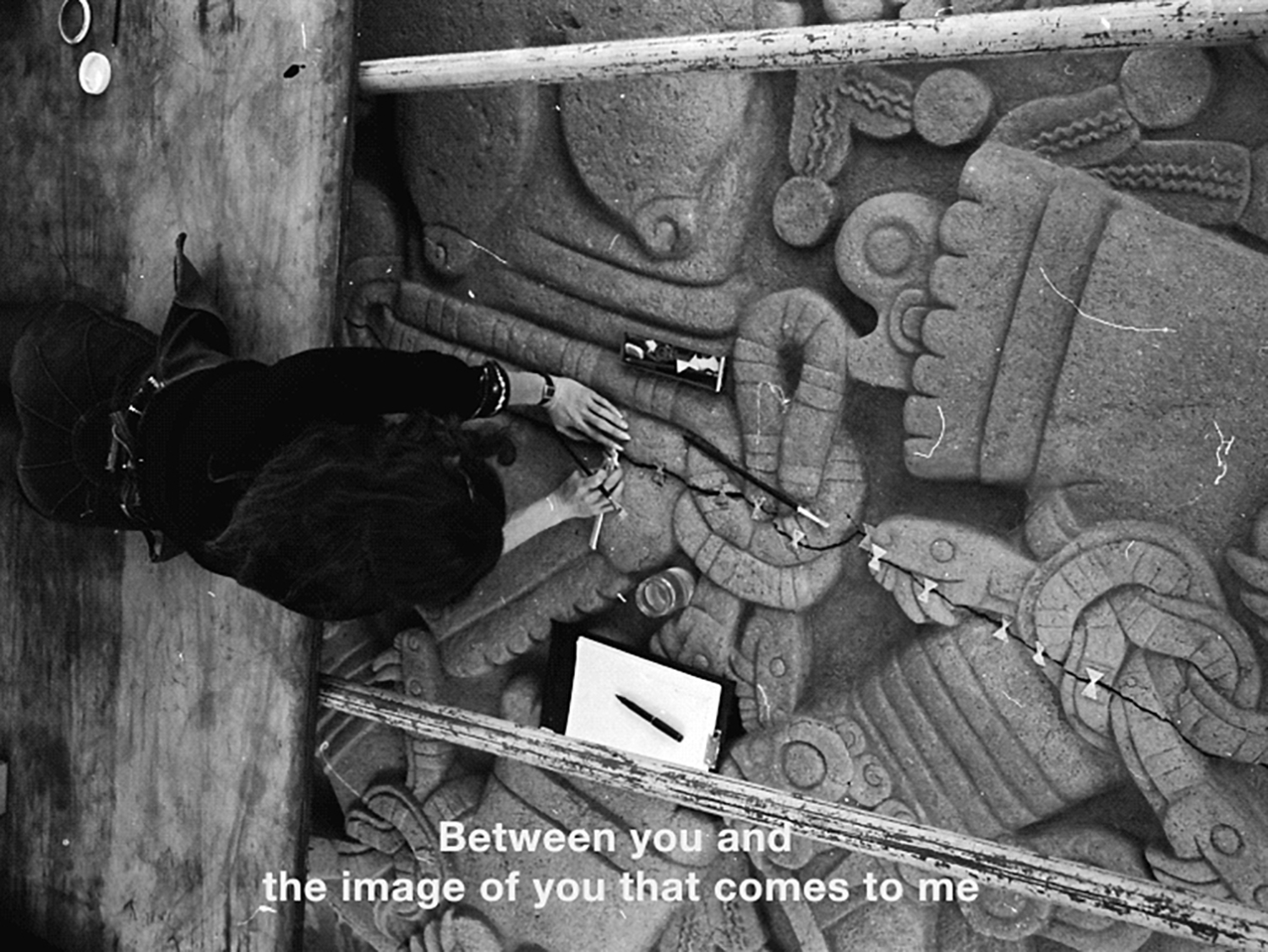
There is a space later in time where you are just a memory, 2010
Black and white, silent, 6min
Video Stills
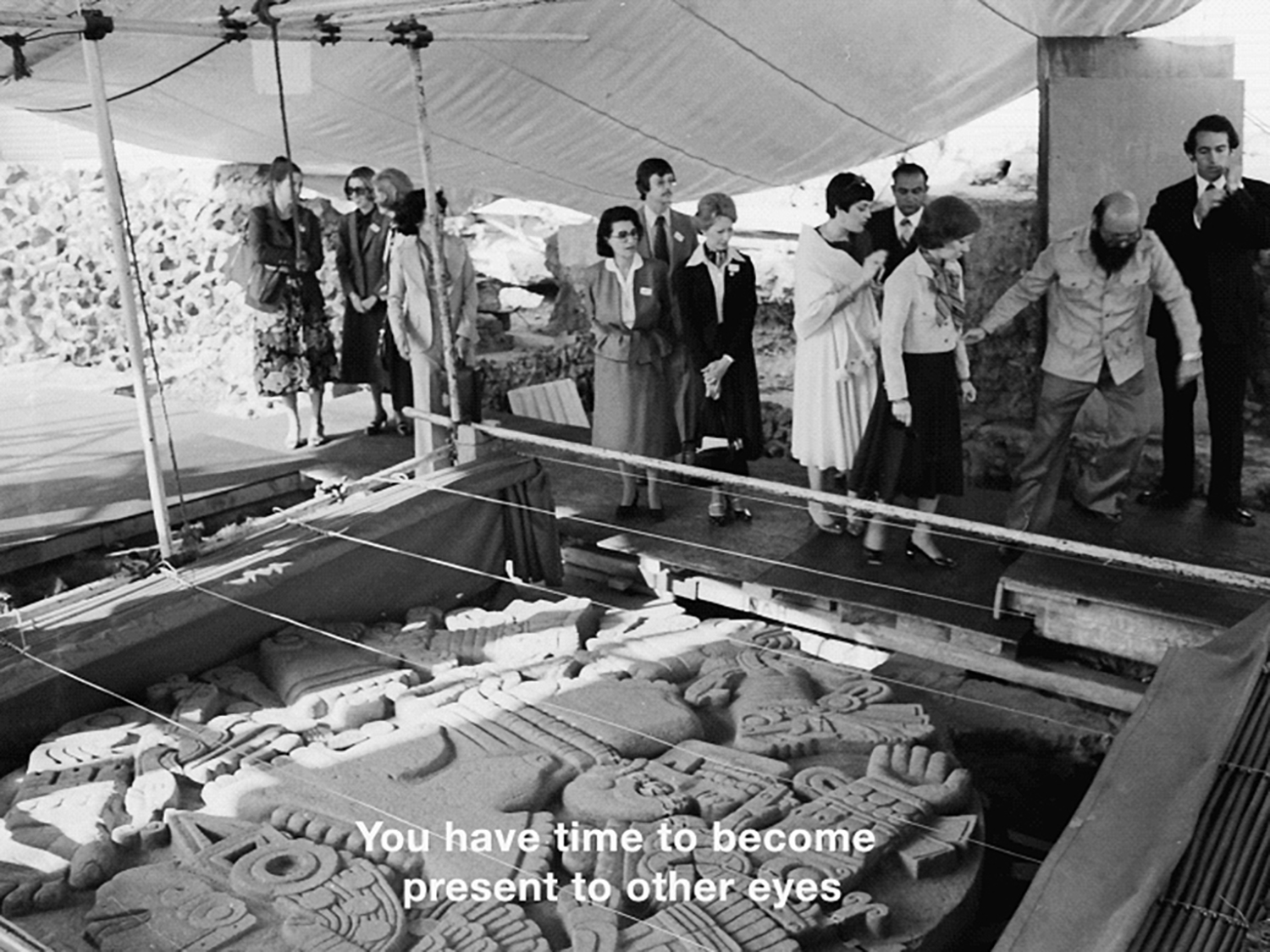
There is a space later in time where you are just a memory, 2010
Black and white, silent, 6min
Video Stills
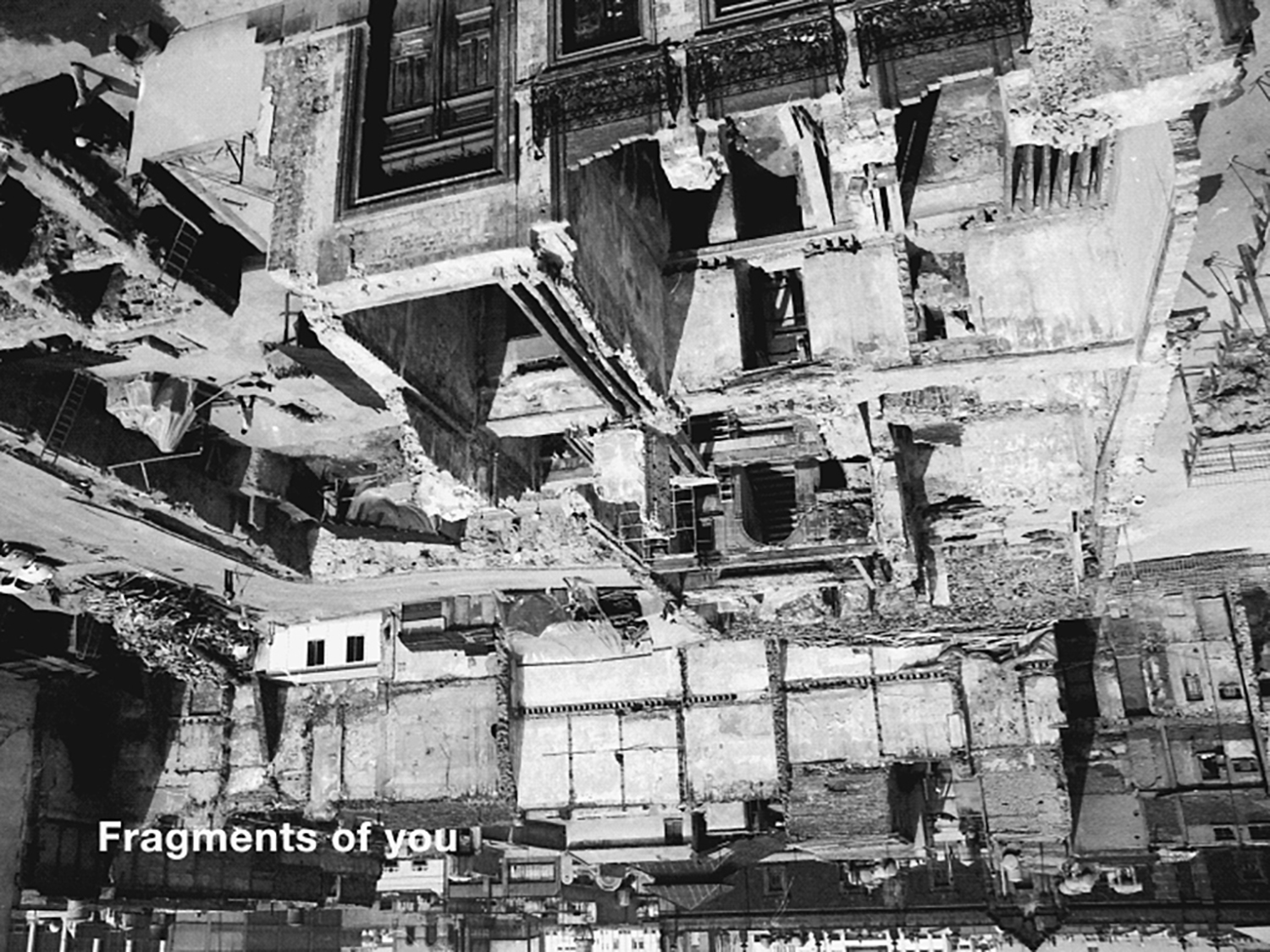
There is a space later in time where you are just a memory, 2010
Black and white, silent, 6min
Video Stills
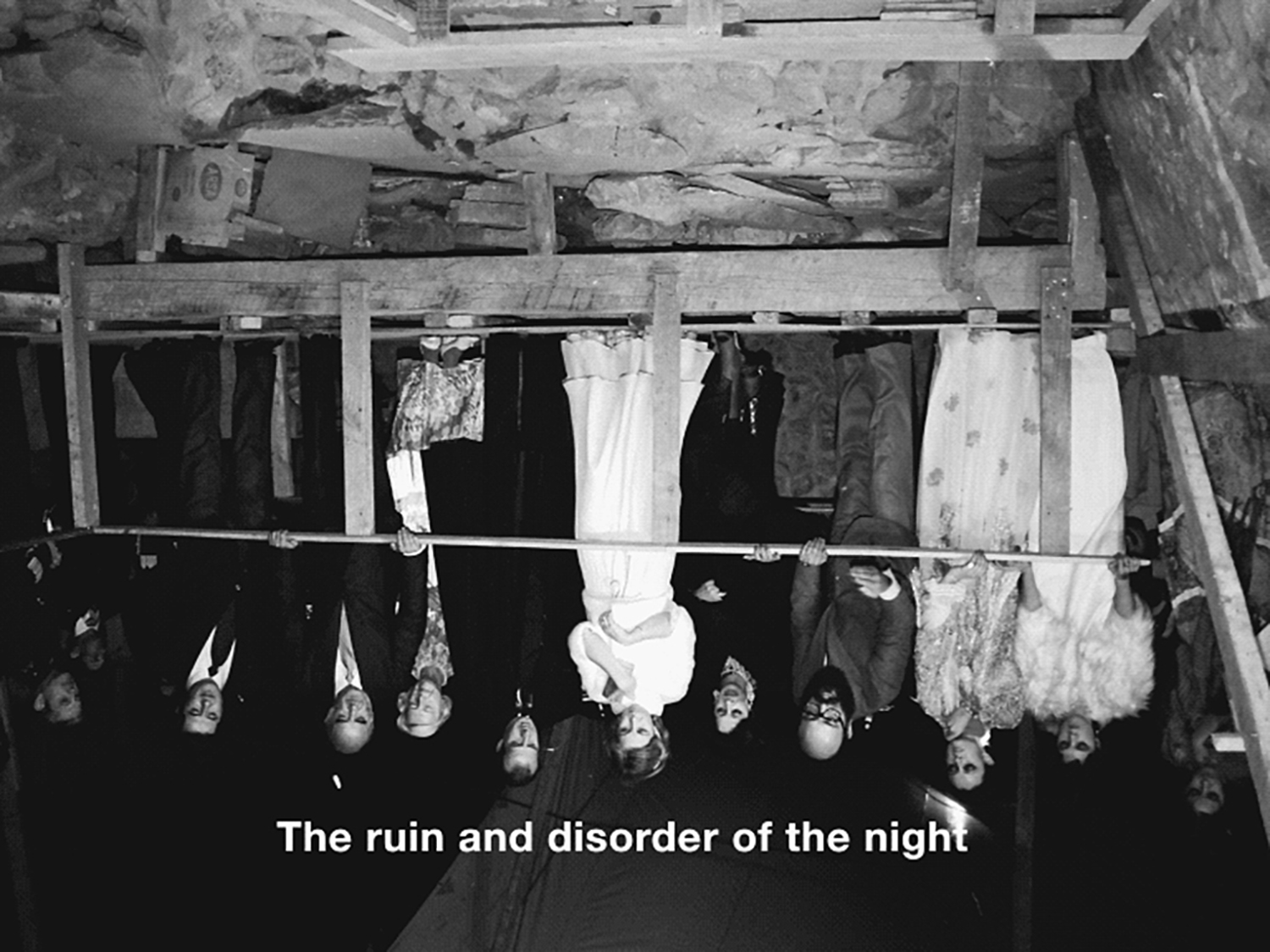
There is a space later in time where you are just a memory, 2010
Black and white, silent, 6min
Video Stills
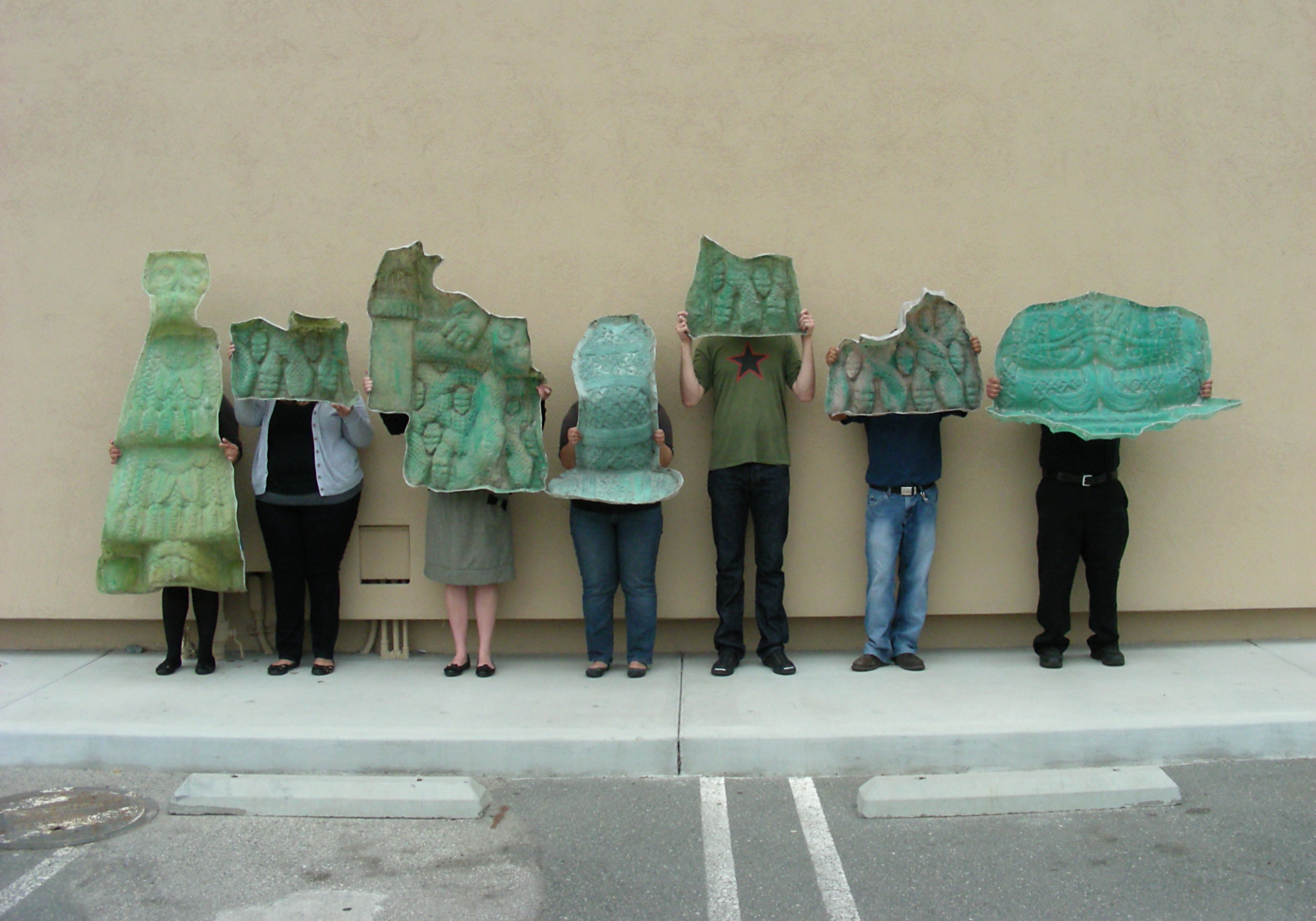
The noticed one, confusing itself with the many, 2010
Photographic prints unframed
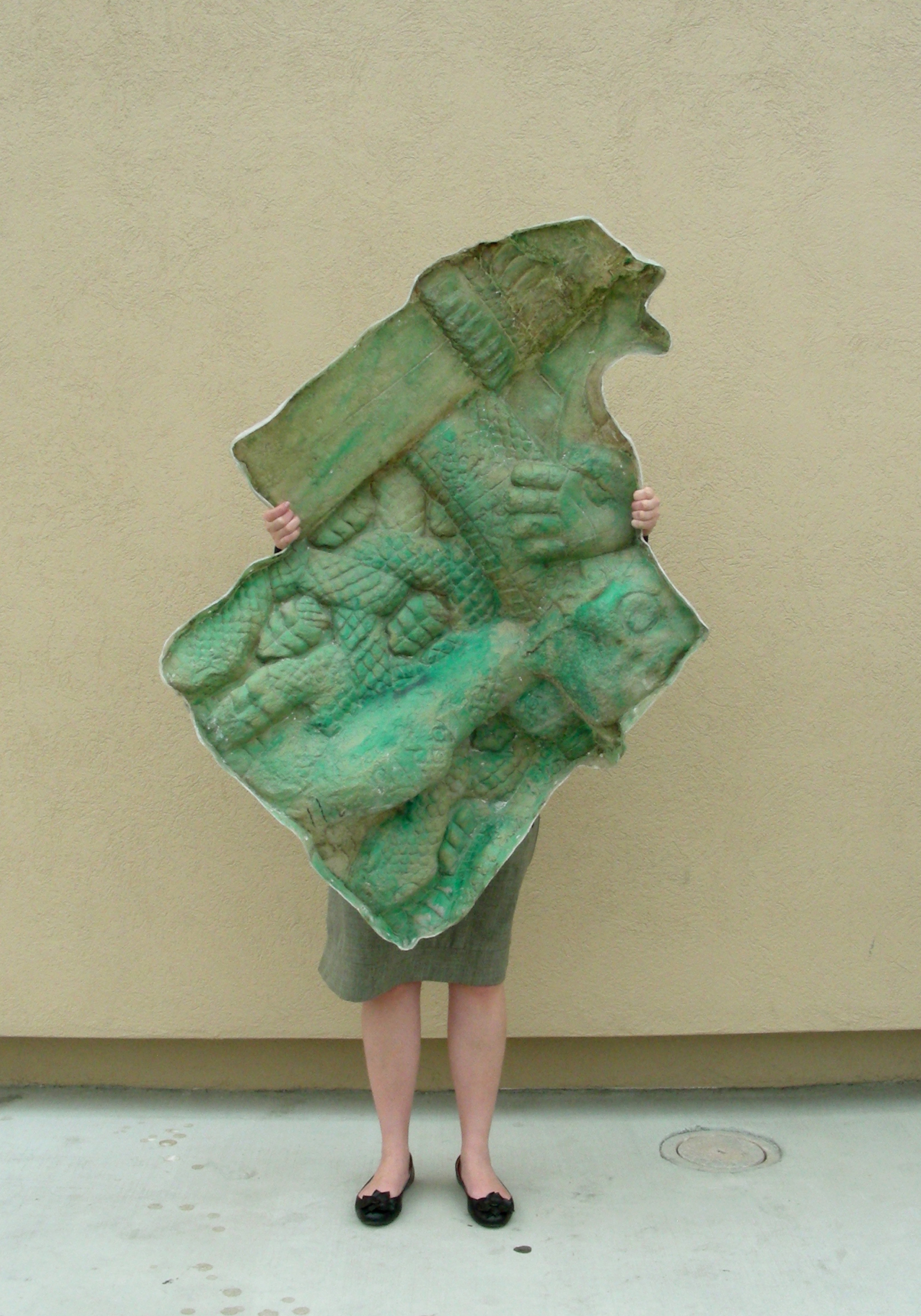
Detail: The noticed one, confusing itself with the many, 2010
photographic prints unframed
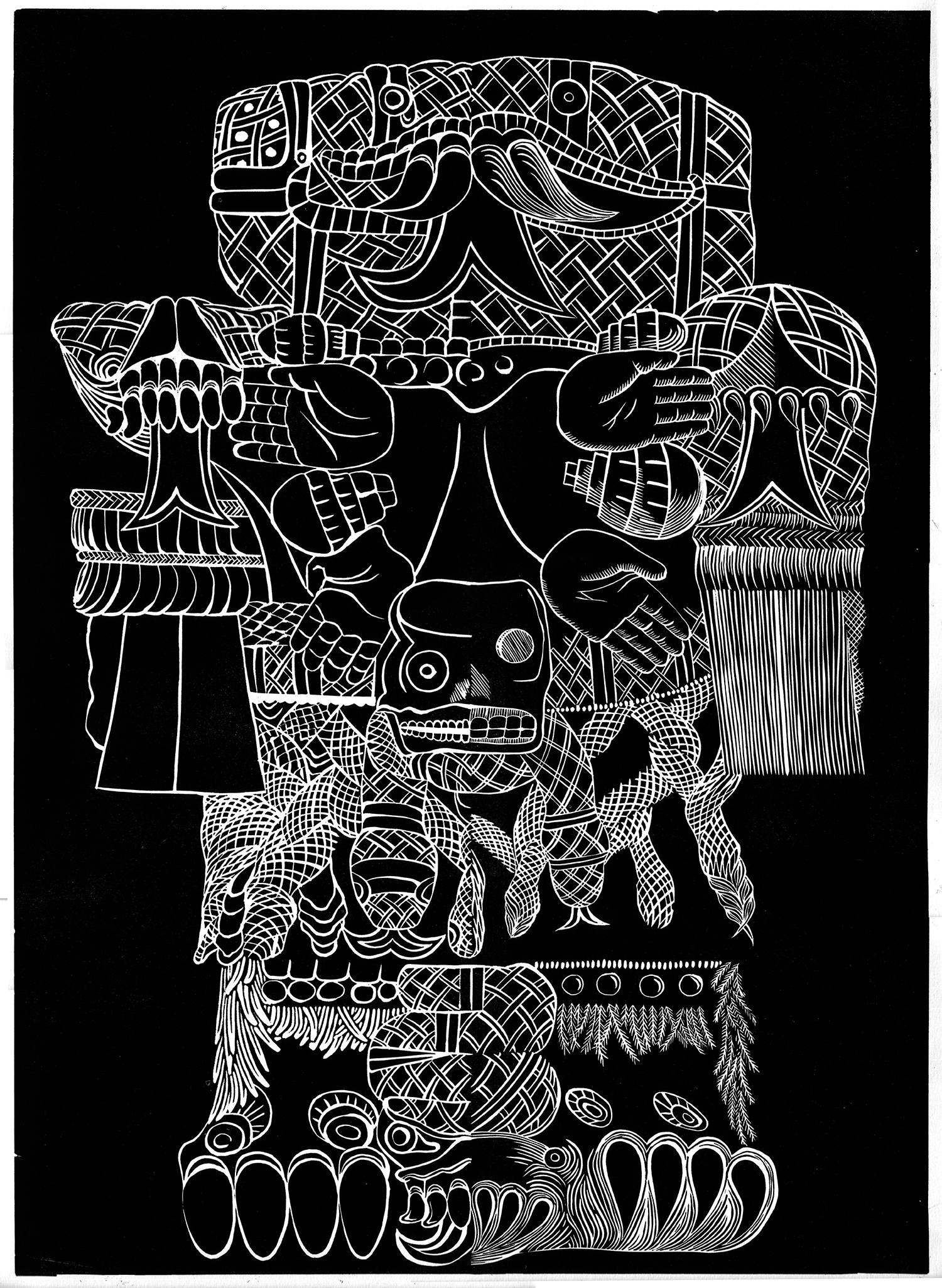
Coatlicue, 2010
Linocut on paper
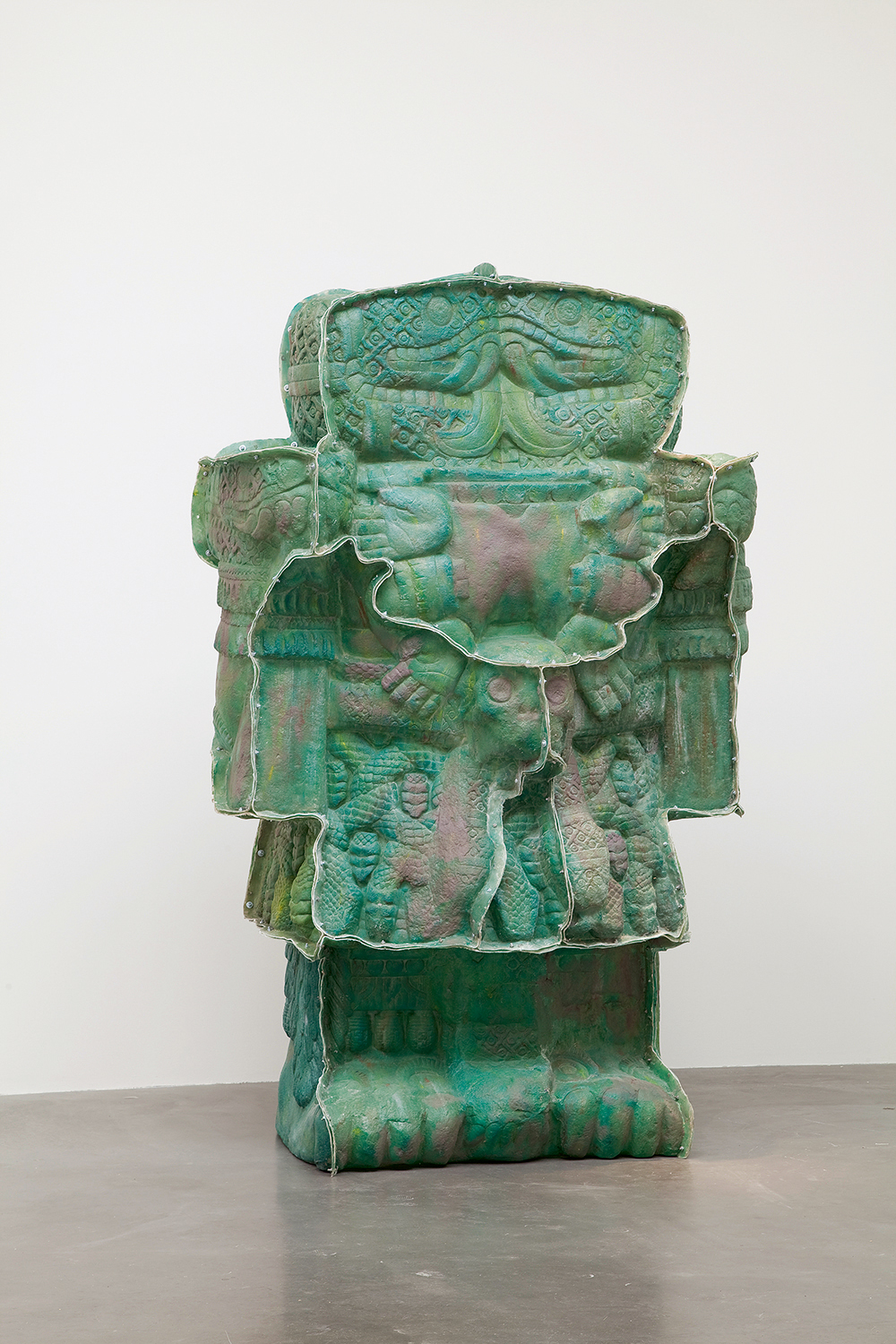
No solid form can contain you, 2010
Fiber glass sculpture from a cast of the original Coatlicue statue
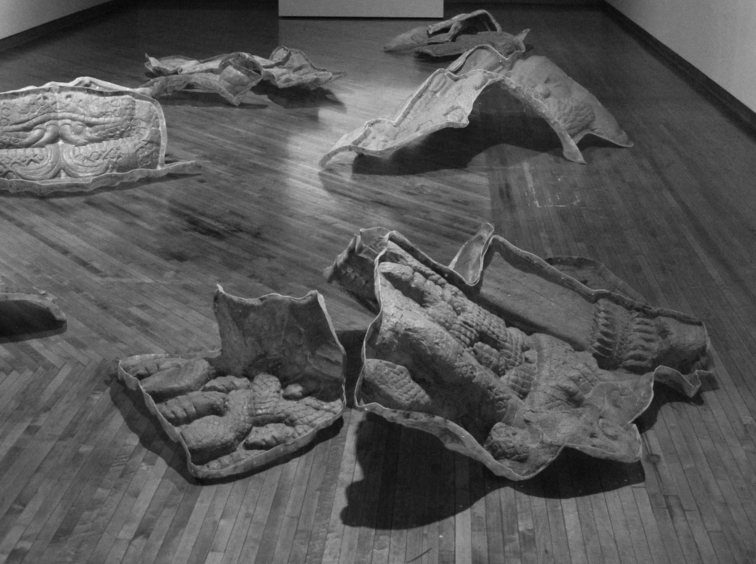
Installation view Between you and the image of you that reaches me, Museum of Latin American Art, Long Beach, USA, 2010.
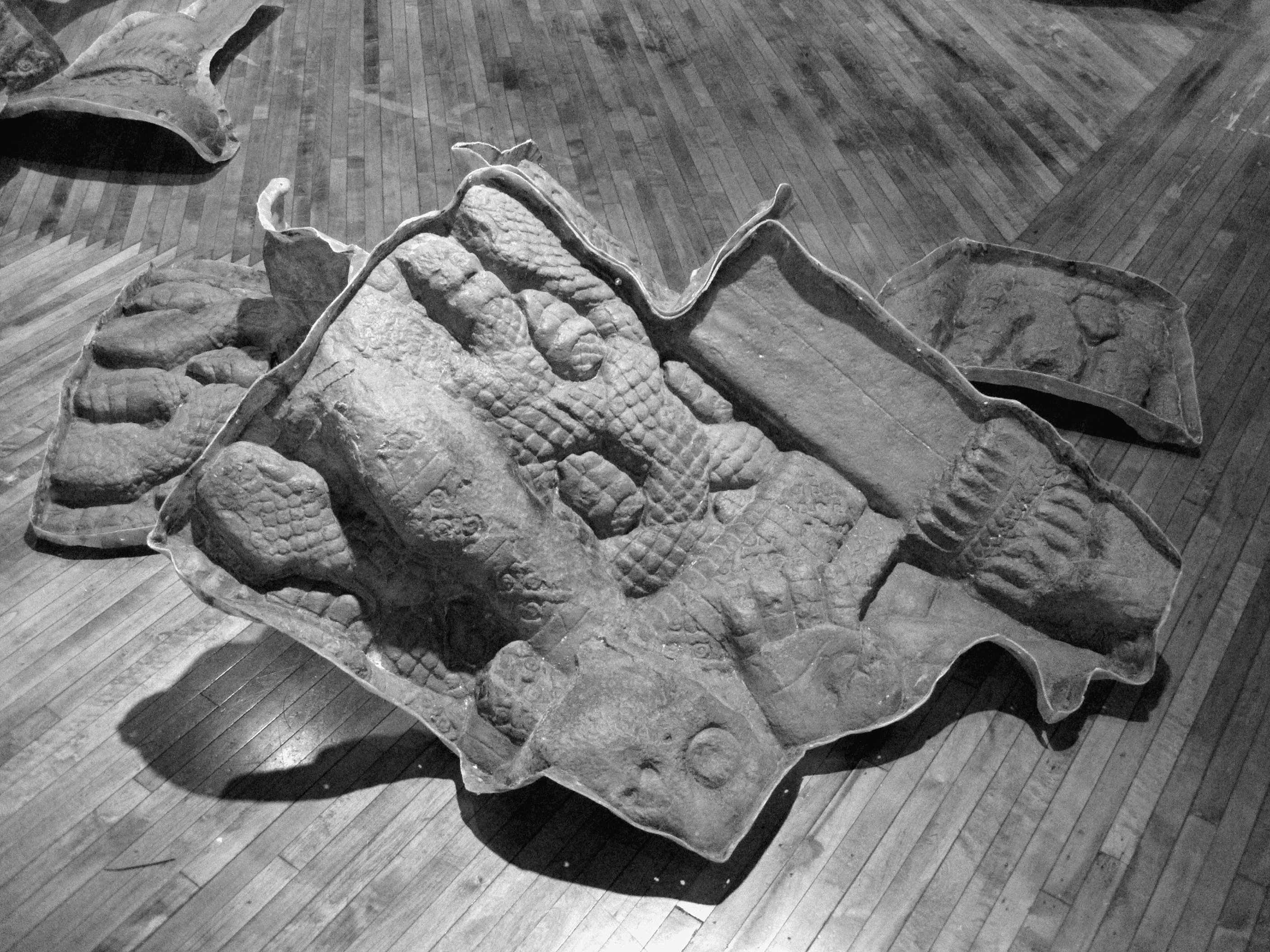
Installation view Between you and the image of you that reaches me, Museum of Latin American Art, Long Beach, USA, 2010.
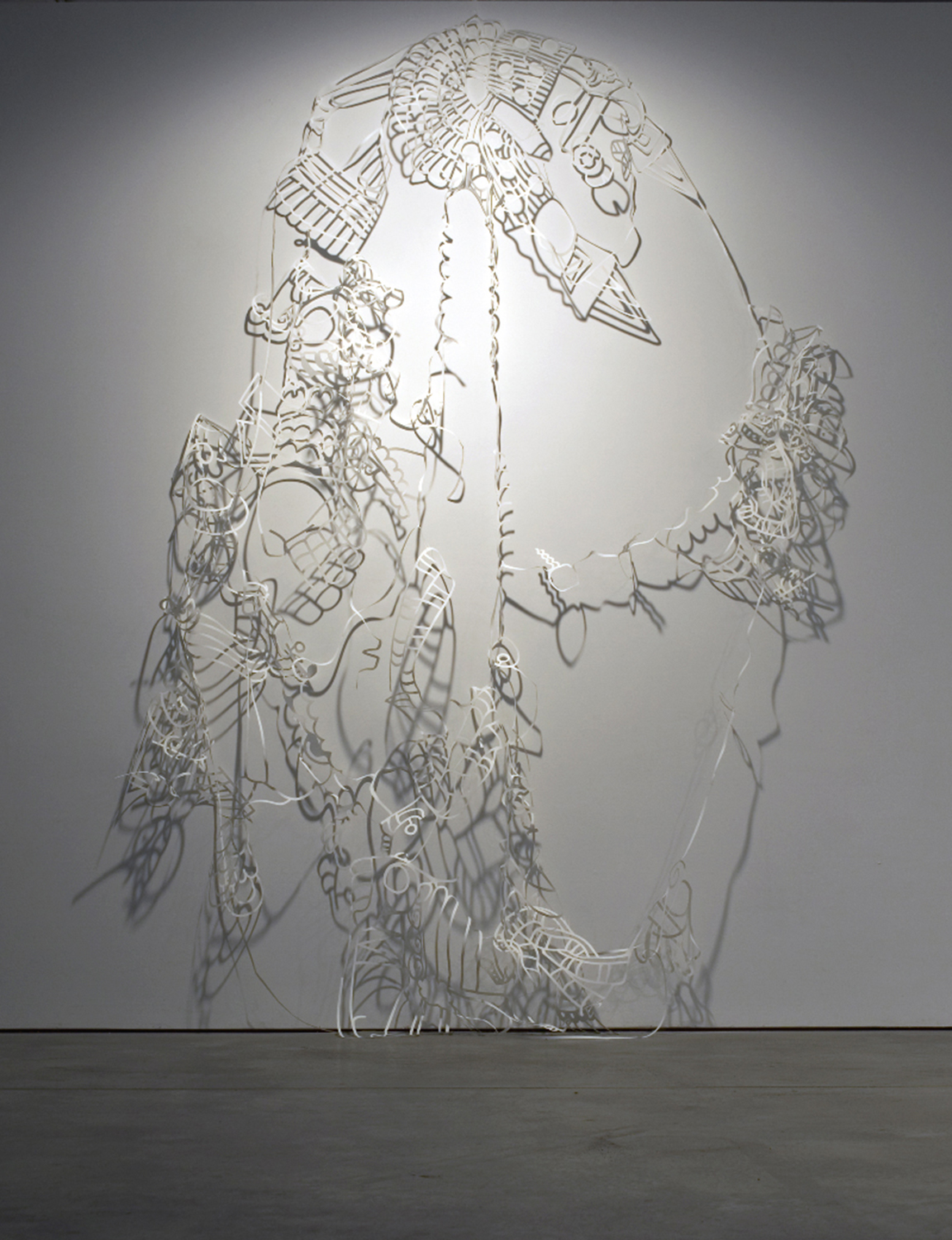
The stronger the light your shadow cuts deeper, 2010
Paper
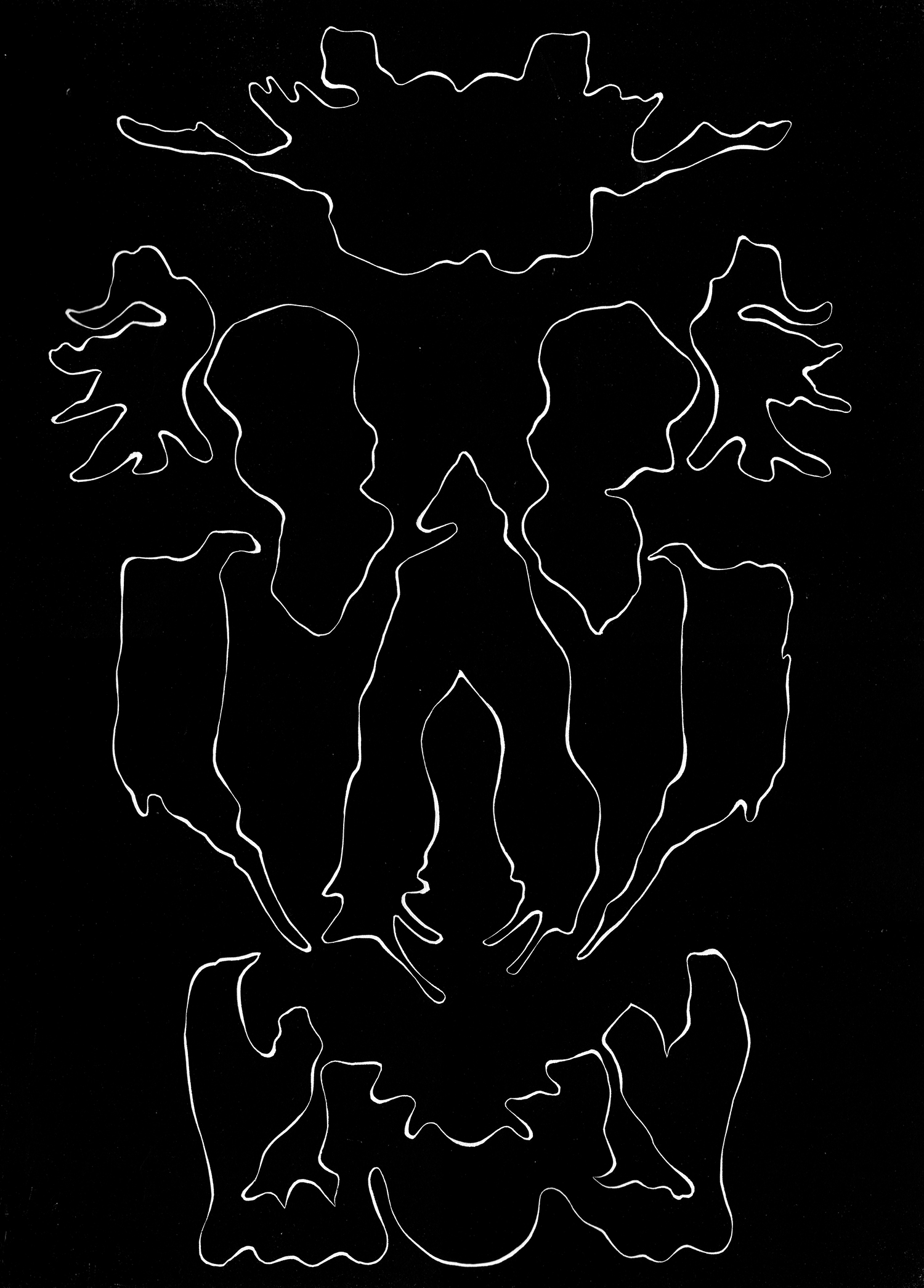
Coatlicue, 2010
Linocut on paper
Do ut des
Objectif Exhibititons, Antwerp, 2008
Curated by Mai Abu ElDahab
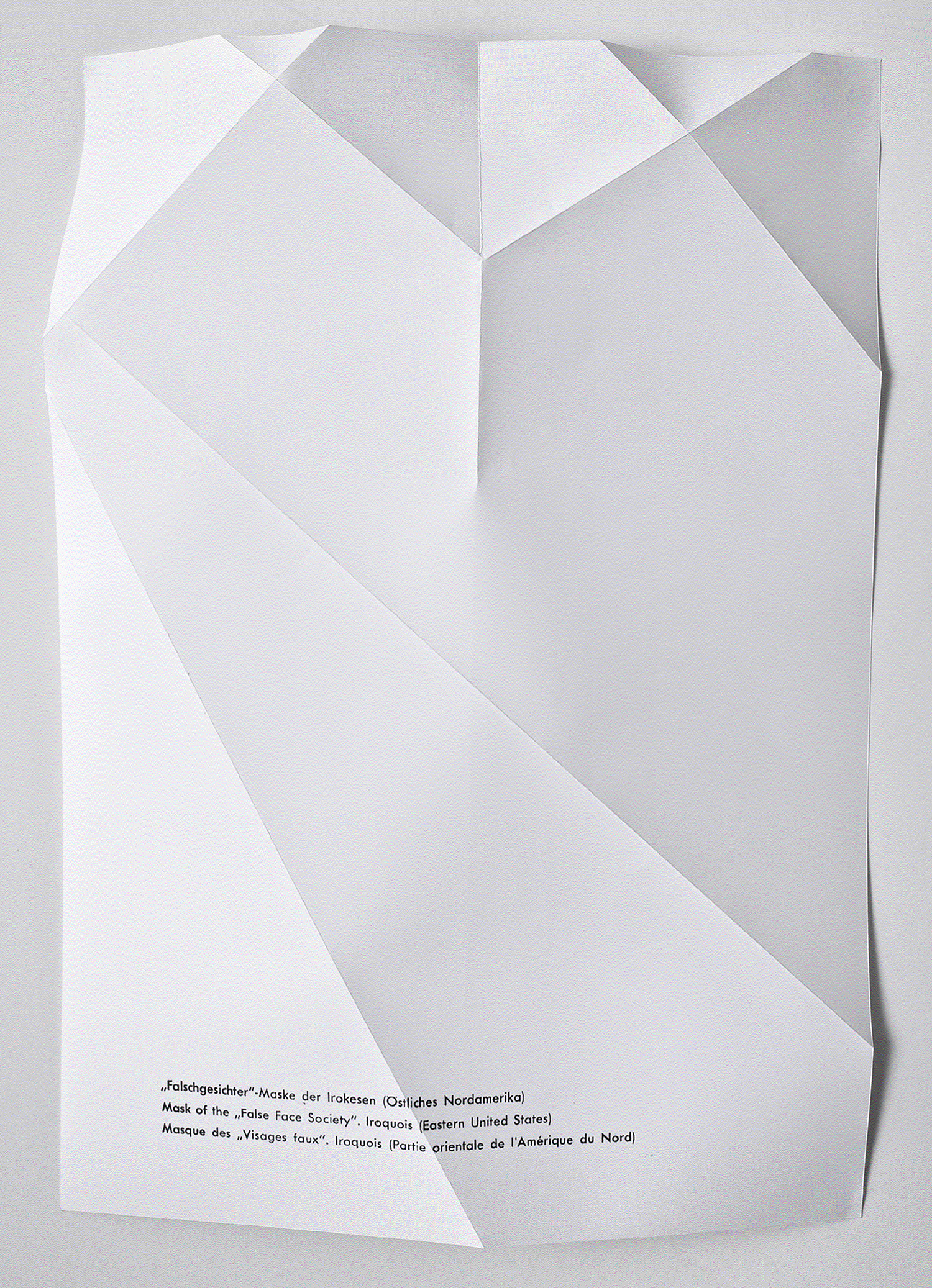
Falschgesichter, 2008
Serie of 23 paper masks. Folded glossy paper, printed text
Installation view Nobody was Tomorrow, Galerie Barbara Wien, Berlin, Germany 2008.
The phrase do ut des implies a more or less equal exchange as the basic principle of reciprocity. The accent is on the exchange process rather than on what is being exchanged. The principle of reciprocity is however never equal, in that every exchange implies a transformation of all the parties involved.
Do ut des is an exhibition combining various elements in what appears to be an awkward ethnographic presentation or the random findings of a future archaeological dig. In its method of combining and reconfiguring various new and existing works, the presentation parallels the content of the project itself – that which traverses and muddles variations on concepts of time.
In this exhibition the series of perforated books Do ut des is presented for the first time: a selection from the book collection “El Mundo de los Museos” [The World of Museums], altered with perforations starting from the front page and working inwards, and which form symmetrical patterns when each spread is opened. Each book is dedicated to a different world museum and contains a two-page spread collaging images of people alongside artworks to indicate the works’ dimensions in relation to the human scale.
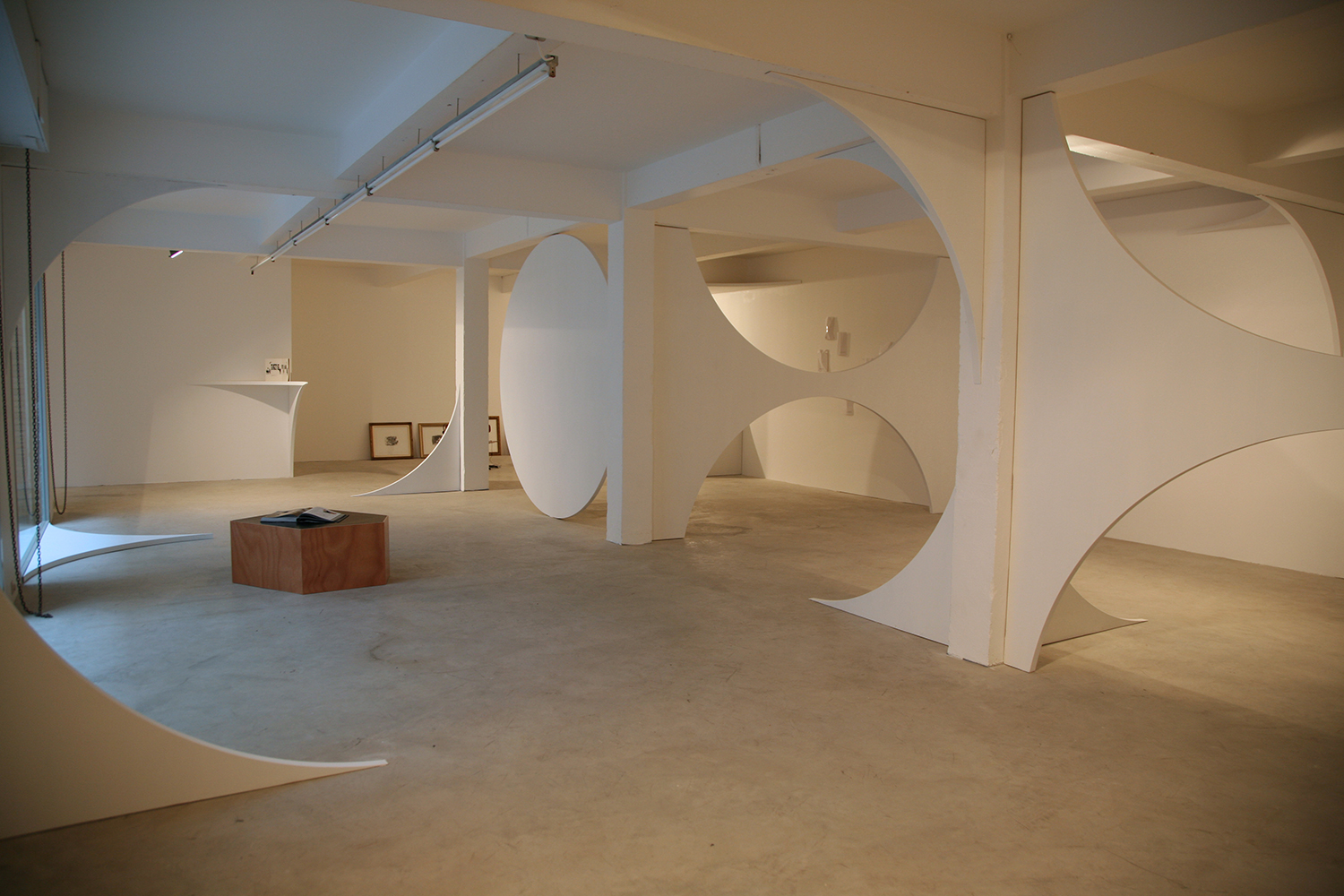
Installation view Do Ut Des,, Objectif Exhibitions, Antwerp, Belgium 2008.
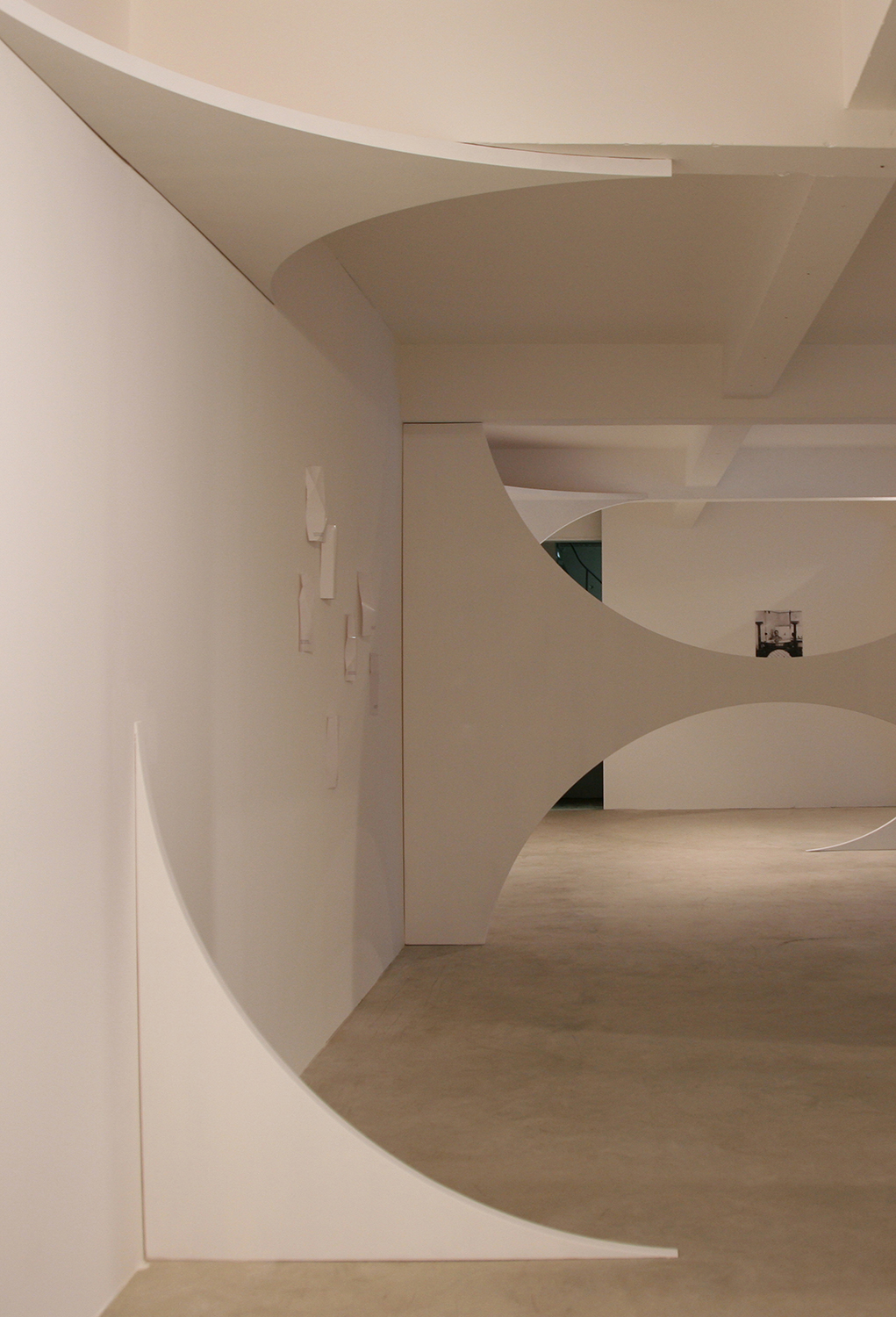
Installation view Do Ut Des,, Objectif Exhibitions, Antwerp, Belgium 2008.
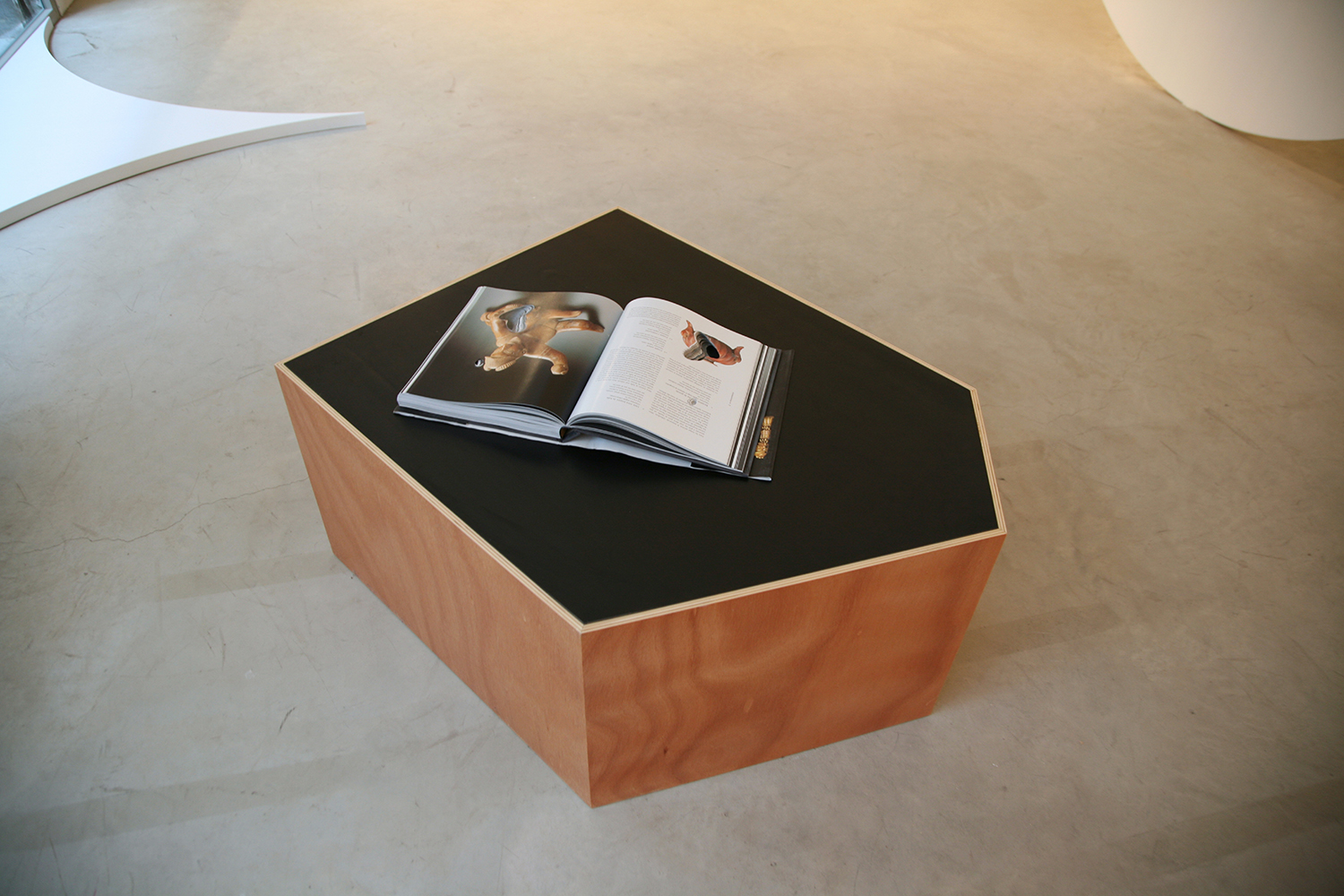
Jansen Collection, 2009
Altered book
Installation view Do Ut Des, Objectif Exhibitions, Antwerp, Belgium 2008.
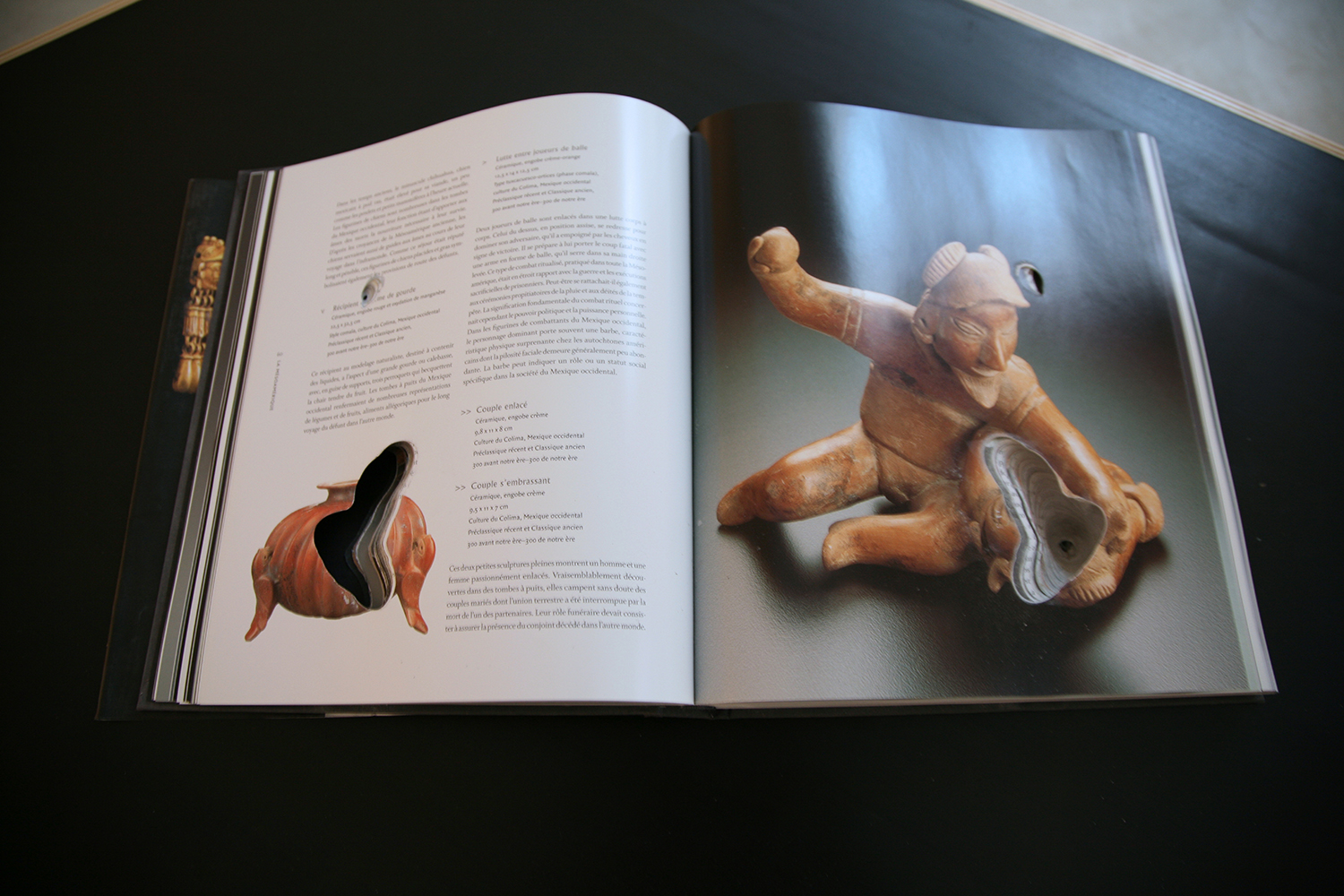
Jansen Collection, 2009
Altered book
Installation view Do Ut Des, Objectif Exhibitions, Antwerpm Belgium 2008.
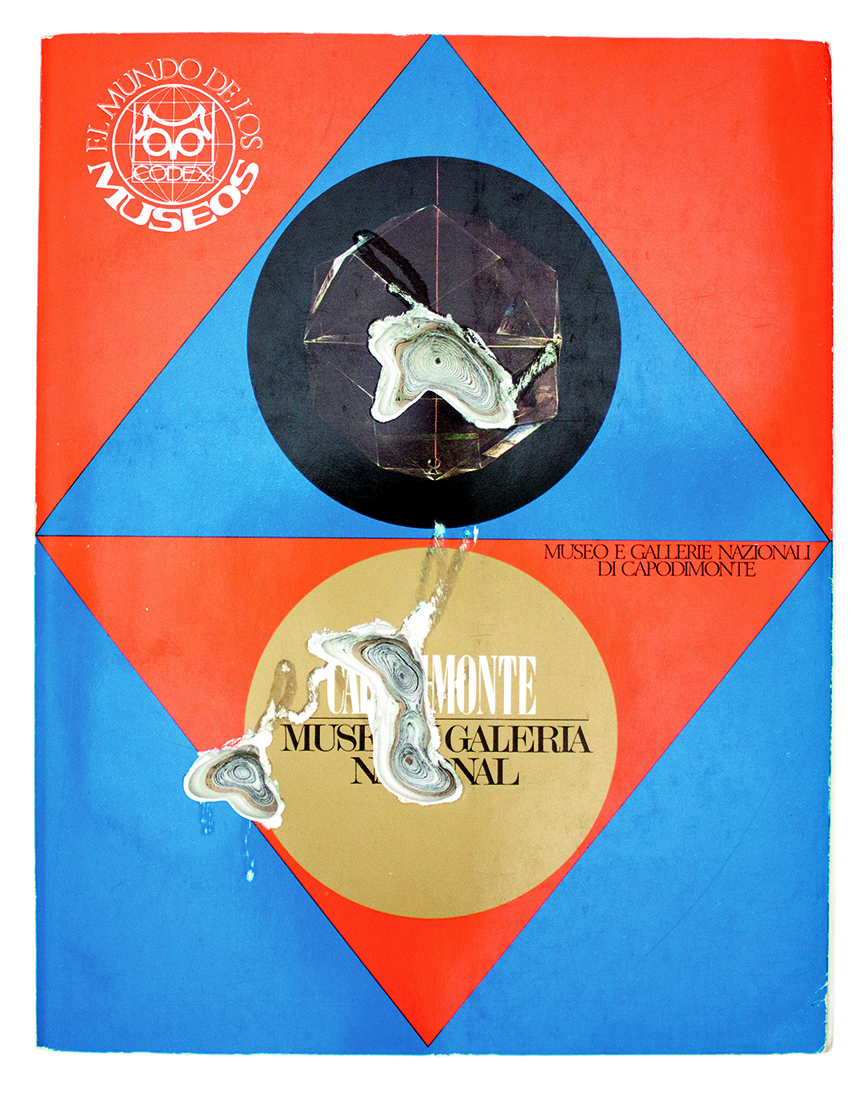
Do ut des, Capodimonte Museo y Galeria Nacional, 2009
Drilled book
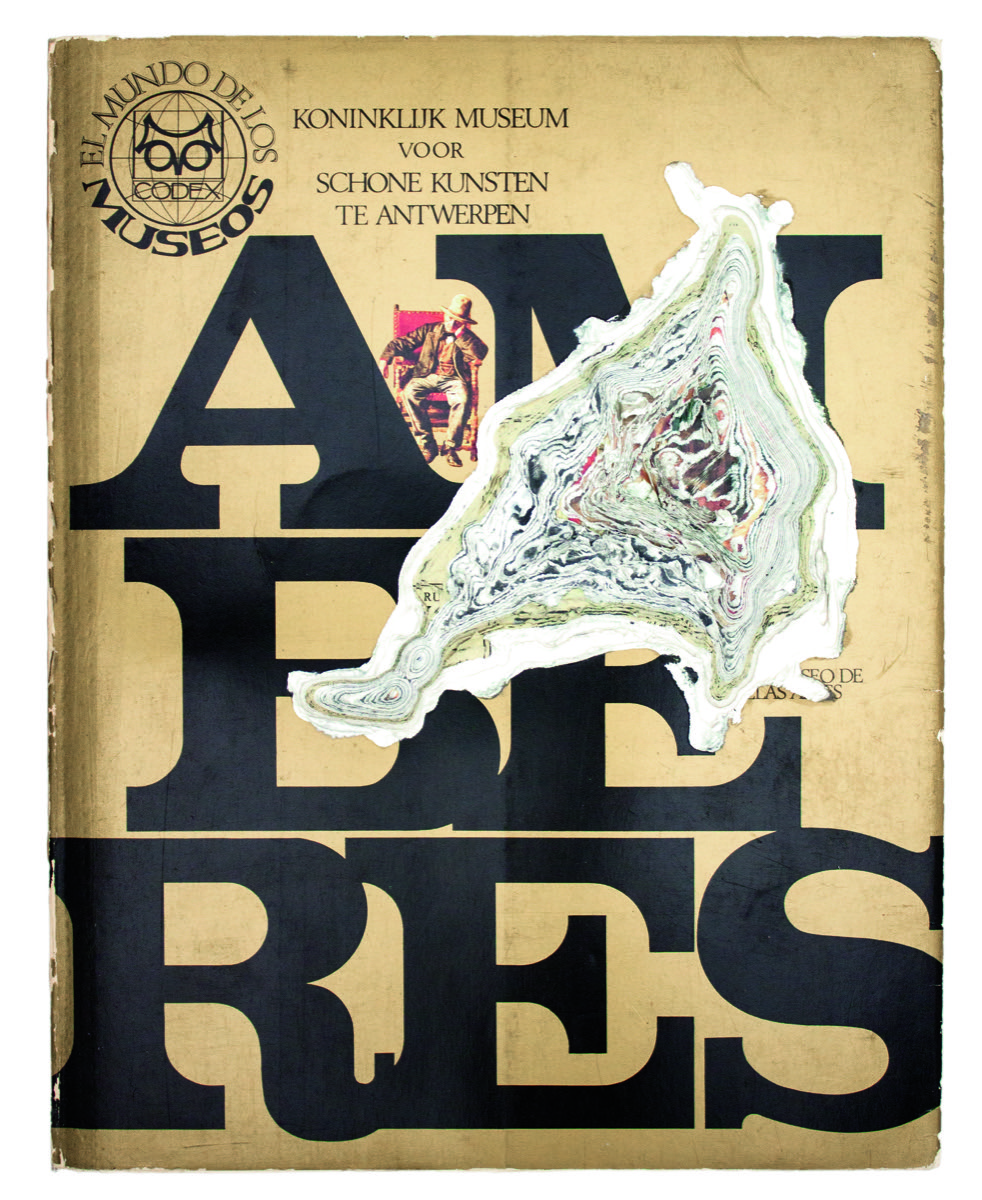
Do ut des, Koninklijk Museum voor Schone Kunsten Te Antwerpen, 2009
Drilled book
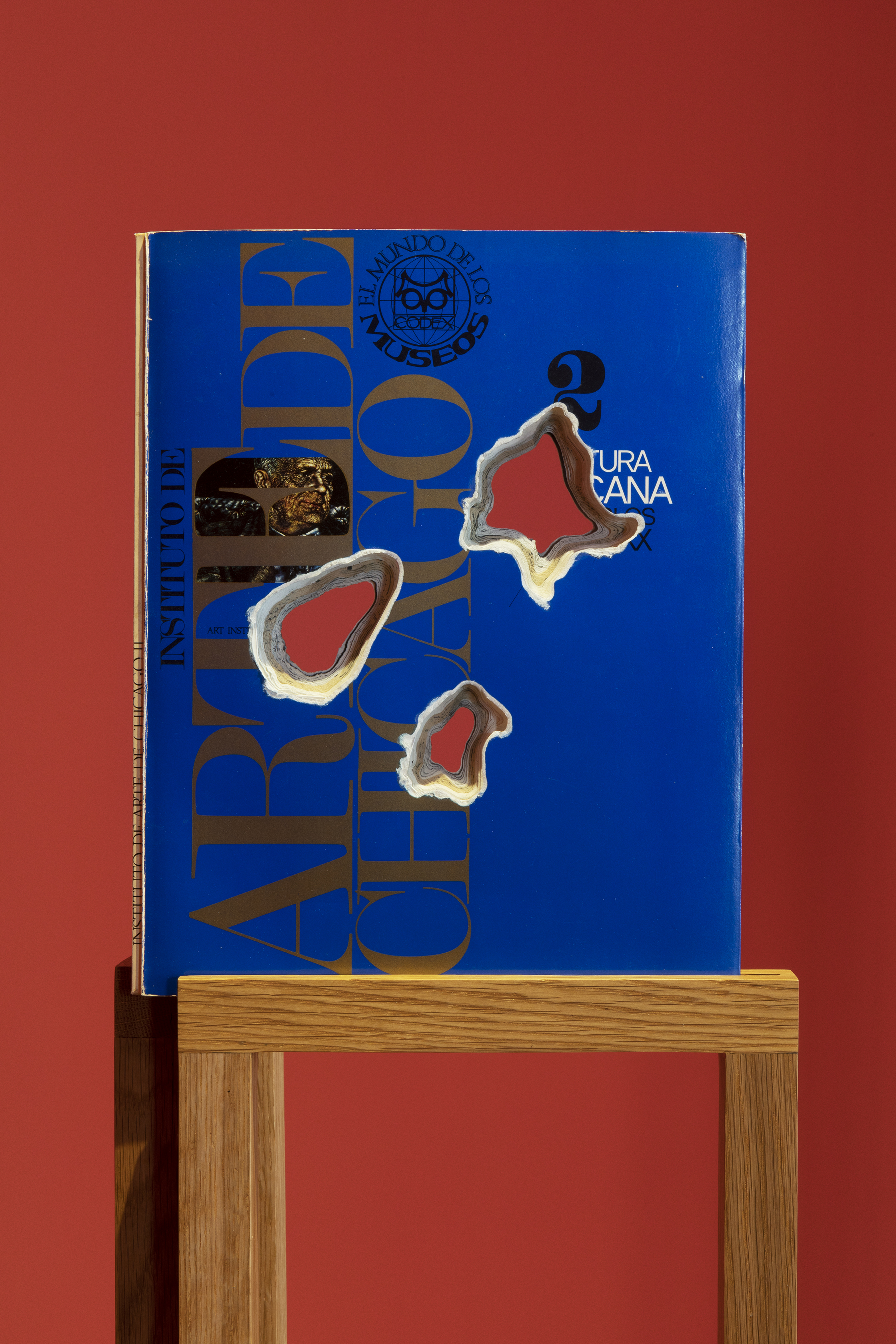
Do ut des, Instituto de Arte de Chicago II, 2019
Drilled book on cedar wooden base
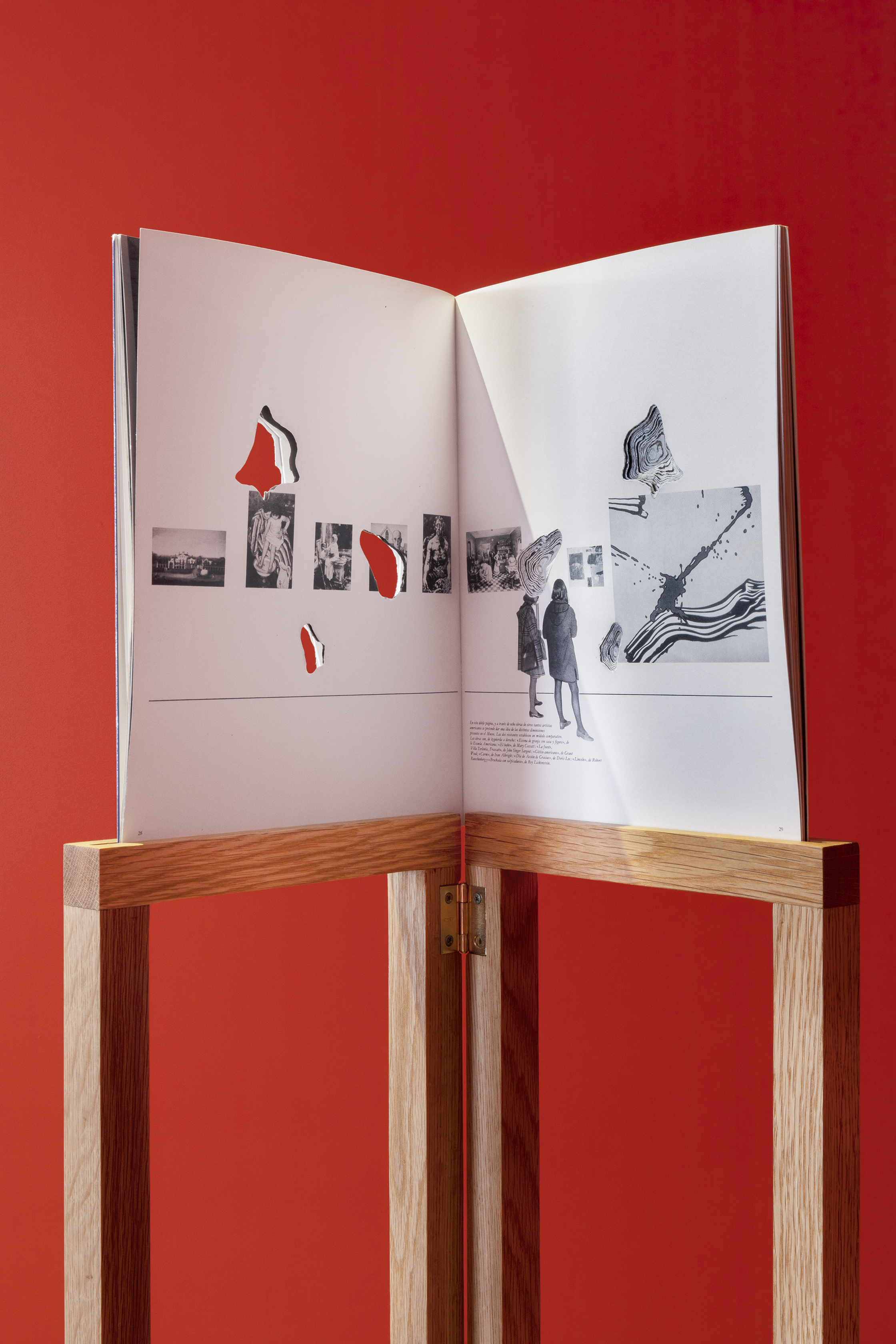
Do ut des, Instituto de Arte de Chicago II, 2019
Drilled book on cedar wooden base
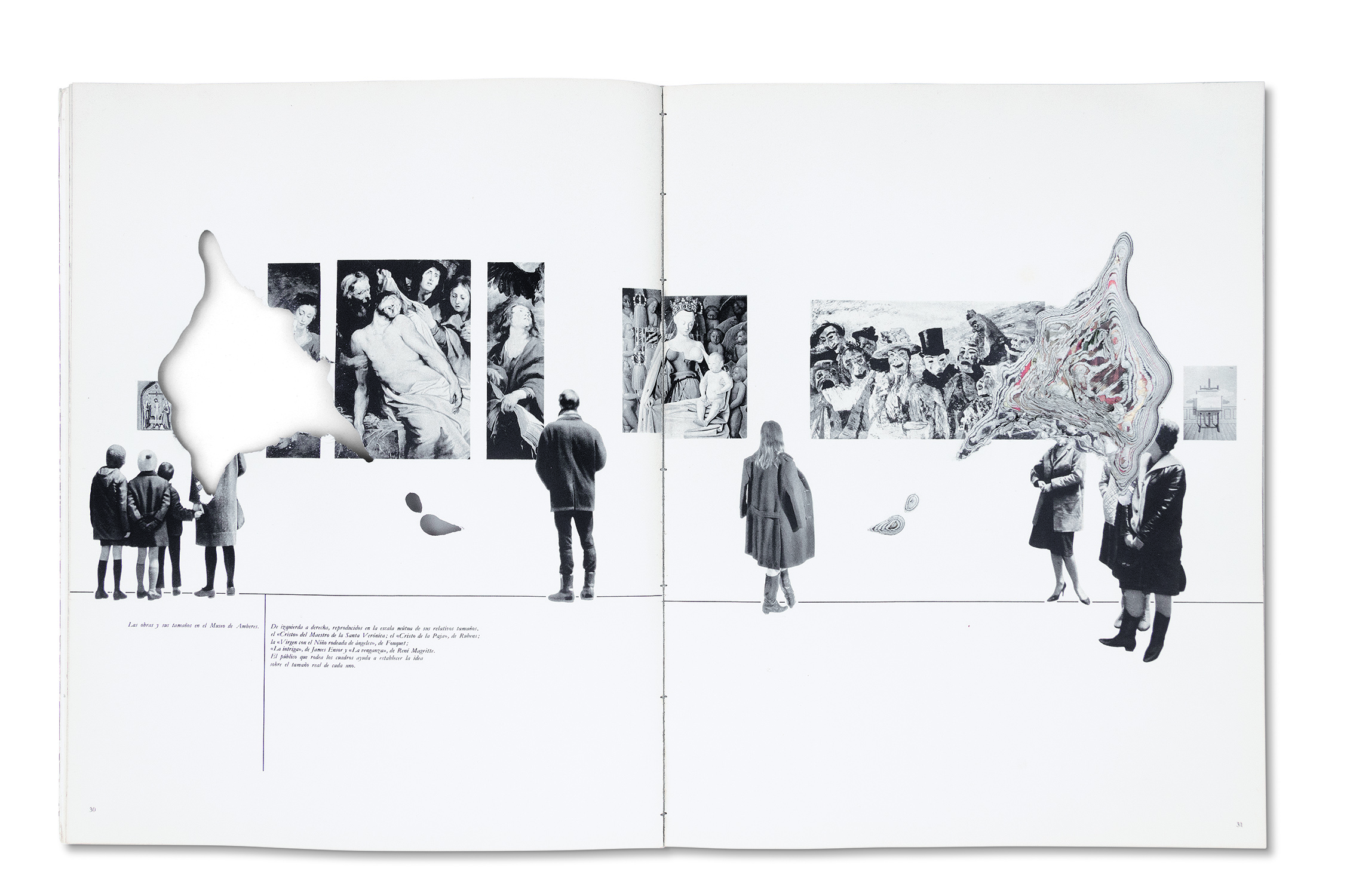
Do ut des, Koninklijk Museum voor Schone Kunsten te Antwerpen, 2008
Drilled book
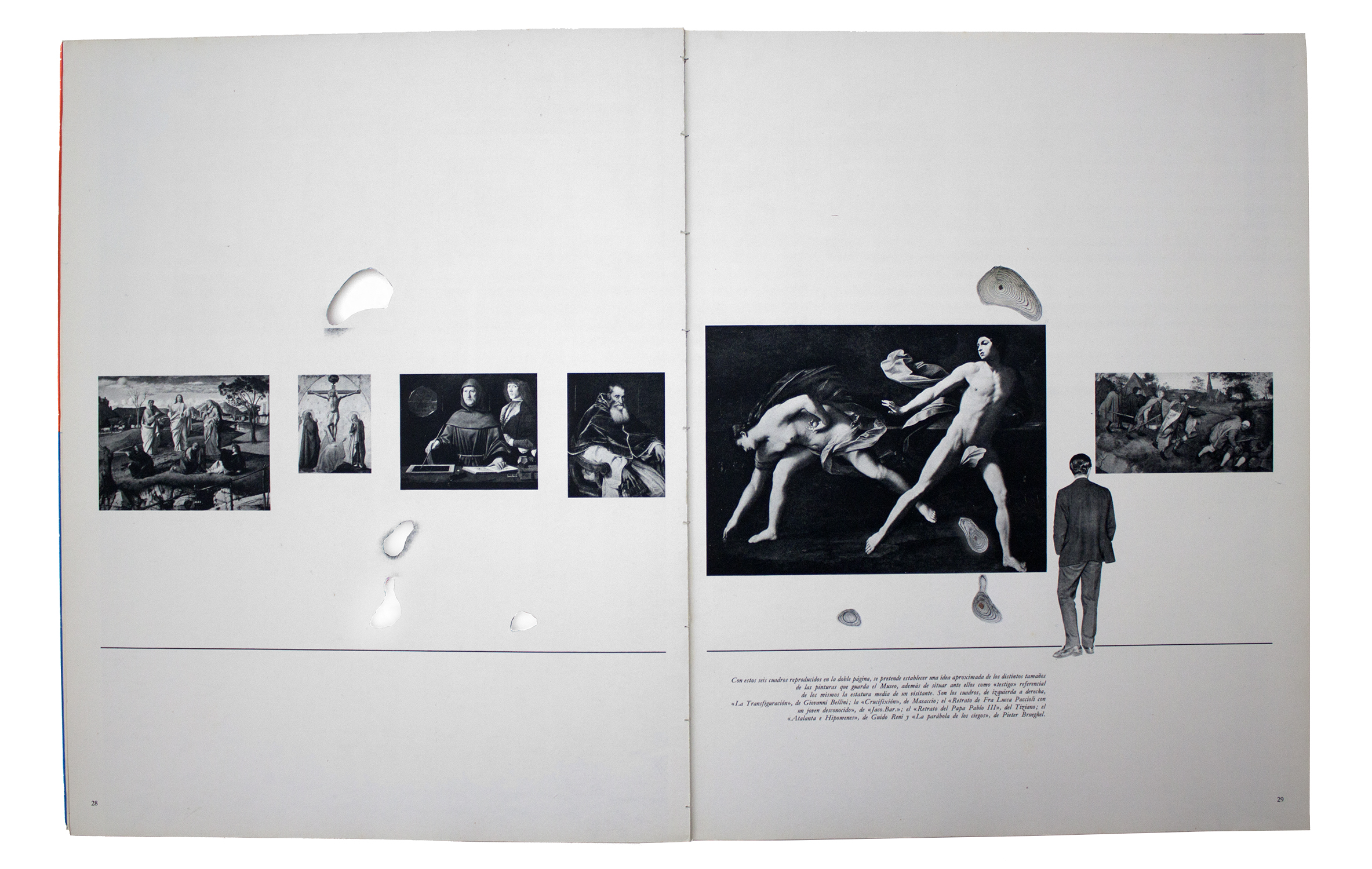
Do ut des, Museo e gallerie nazionali de Capodimonte, 2008
Drilled book
What we caught we threw away,
what we didn’t catch we kept
CCA: Center for Contemporary Arts, Glasgow 6 April - 18 May 2013
Chisenhale Gallery, London 24 May - 14 July 2013

Damaged image of Stela K, Quiriguá, Guatemala, 1894
Photo: Alfred Maudslay

Zoomorph P, Quiriguá, Guatemala, 1894
Photo: Alfred Maudslay

Zoomorph P, Quiriguá, Guatemala, 1894
Photo: Alfred Maudslay

Zoomorph P, Quiriguá, Guatemala, 1894
Photo: Alfred Maudslay

Zoomorph P, Quiriguá, Guatemala, 1894
Photo: Alfred Maudslay
Alfred Maudslay was a British explorer who travelled extensively in the Maya region in Mexico and Guatemala between 1880-1920. Maudslay played a crucial role in the understanding of Maya hieroglyphic writing. He recorded the monument’s inscriptions with drawings, photographs and plaster casts.
He also developed the technique known as paper squeezes, moulds made out of papier-mâché. I am interested in the trajectory of these objects, which depart from a direct contact with the original monuments and end up as negatives, positives, photographs and drawings. This immense amount of physical information travelled first as raw materials from England to the Maya region in the form of wrapping paper and plaster from London to Guatemala, returning to London as a precise and diverse record of the ancient Maya monuments. Maudslay’s documents, photographs and casts are part of the collection of the British Museum. During the summer of 2012, I made a visit to the museum’s library and discovered the complicated negotiations he had with both the British Museum and the V&A Museum, trying to convince them to keep his casts and moulds as part of the Museum’s collection.
Curiously enough, the institutions were not particularly interested in keeping all the surrogates and ghost objects produced by Maudslay. Nowadays, this material is of great value due to the fact that many of the original monuments were smuggled or destroyed, Maudslay’s objects being the only existing record of them.
Since 2011, I have been experimenting with Maudslay’s techniques, realizing a series of paper squeezes out of different urban and natural landscapes in Mexico City, Oaxaca, Berlin, Scotland and Costa Rica. I was interested in a one to one appropriation of an object, with such basic resources as paper, glue and my hands. The result is a series of shadow moulds, or paper traps. The objects, casts, drawings, photographs and texts produced by Alfred Maudslay are now kept in storage at the British Museum, as quiet witnesses of an attempt to capture and absorb the object of observation, squeezing it until the last consequences.


View of the Alfred Maudslay casts and molds collection. Storage facility,
British Museum, London, 2013

Detail: Lost Magic Kingdoms Paolozzi, 2013
Plaster Plate on metal grid
Installation view What we caught we threw away, what we didn’t catch we kept, CCA, Glasgow, 2013.

Alfred Percival Maudslay in Chichen Itzá, Guatemala, 1889

Installation view What we caught we threw away, what we didn’t catch we kept, CCA, Glasgow, 2013.

Detail: Stelae Storage, 2013
Metal structure, two plaster plates, 28 inkjet prints mounted on cardboard

Detail: Stelae Storage, 2013
Metal structure, two plaster plates, 28 inkjet prints mounted on cardboard

Lost Magic Kingdoms Paolozzi, 2013
Plaster Plate on metal grid
Installation view What we caught we threw away, what we didn’t catch we kept, CCA, Glasgow, 2013.

Tree Trap Berlin, 2011
Paper Squeeze, cotton paper.
Installation view What we caught we threw away, what we didn‘t catch we kept, Chisenhale Gallery, London, UK, 2013.

Tree Trap Cove Park, 2012
Paper Squeeze, cotton paper. 190 x 30 x 40 cm
Cove Park, Scotland, UK
Installation view What we caught we threw away, what we didn’t catch we kept, CCA, Glasgow, 2013.

Quiriguá Stela, 2012
Plaster plate, paper squeeze. cotton paper, metal structure
Installation view What we caught we threw away, what we didn‘t catch we kept, Chisenhale Gallery, London, UK, 2013.

Zoomorph P, 2013 / Imprint Zoomorph P, 2013
Carved Briar wood root / Woodcut prints on cotton paper
Installation view What we caught we threw away, what we didn‘t catch we kept, Chisenhale Gallery, London, UK, 2013.

Photograph of the making of Tree
Trap Berlin,
2013

Tree Trap Oaxaca, 2012
Paper squeeze, wool and cotton paper

Zoomorph P, 2013
Carved Briar wood root
Installation view You have time to show yourself before other eyes, 8th Berlin Biennale for Contemporary Art, KW Institute for Contemporary Art, Berlin, 2014.

Imprint Zoomorph P -a,b,c, 2013
Woodcut prints on cotton paper.
Each 240 x 55 cm
You have time to show yourself before other eyes
8th Berlin Biennale for Contemporary Art, KW Institute for Contemporary Art, Berlin
May 29 – August 3 2014

Installation view You have time to show yourself before other eyes, 8th Berlin Biennale for Contemporary Art, KW Institute for Contemporary Art, Berlin, 2014.

Installation view You have time to show yourself before other eyes, 8th Berlin Biennale for Contemporary Art, KW Institute for Contemporary Art, Berlin, 2014.

Hieroglyph Storage, 2014
Metal structure, 7 white plaster pieces
Installation view You have time to show yourself before other eyes, 8th Berlin Biennale for Contemporary Art, KW Institute for Contemporary Art, Berlin, 2014.

Tree Trap Oaxaca, 2013
Paper squeeze, wool and cotton paper
Installation view You have time to show yourself before other eyes, 8th Berlin Biennale for Contemporary Art, KW Institute for Contemporary Art, Berlin, 2014.

Detail: You have time to show yourself before other eyes, 8th Berlin Biennale for Contemporary Art, KW Institute for Contemporary Art, Berlin, 2014.

Installation view You have time to show yourself before other eyes, 8th Berlin Biennale for Contemporary Art, KW Institute for Contemporary Art, Berlin, 2014.
Between
you
and the image
of you
that reaches
me
Museum of Latin American Art (MOLA), Long Beach California, US
Curated by Cecilia Fajardo Hil
2010

Between you and the image of you that reaches me takes as its starting point the mythology and the history of two archaeological pieces representing Coatlicue and Coyolxauhqui in Aztec mythology: deities of Death/Earth and the Moon, respectively.
Both pieces have a complex history, especially in relation to the series of spaces they have occupied – in the collective imagination, as well as in museums, basements, public squares, and presidential speeches.
Coatlicue had a daughter, Coyolxauhqui (the Moon), and four hundred sons (the stars). One day, Coatlicue becomes mysteriously pregnant, causing her daughter to become enraged and convince her brothers to plot murderous vengeance against their mother. Coatlicue, pregnant with the Sun (Huitzilopochtli), awaits his arrival patiently. When the Moon and the stars attempt to kill Coatlicue, the Sun springs from his mother’s womb to defend her. The figure of Coyolxauhqui is that of a di membered woman. Following this incident, her brother, the Sun, decapitates her and tosses her down a mountain. Her body is dispersed – arms over here, legs over there. The Sun is the victory of the new time: linear time that displaces circular time; a time of accumulation.
This story belongs to a circular time that operates through the destruction of what is created during the span of a day. The cycles are kept in motion by those who travel through time. Through the sacrifice of the Moon, the repetition of the cycle is guaranteed. A sculpture of Coyolxauhqui, dismembered from the myth, was found almost intact in the Zocalo (main square) of Mexico City in 1978. Separated from its time as well as from its quotidian cycle of sacrifice, it has landed in the hands of archaeologists, anthropologists, and politicians, who lean on it to explain the mestizo and fragmented nature of Mexico today.
Coatlicue and Coyolxauhqui, for a time left out of the orbit of social purpose, are presented in their abandonment as enigmas. Their secret symbol is the cemetery of the meaning-building machine. In linear time, in the time of the Sun, the reallocation of ruins is the hidden machinery of continuous change.

Do ut des, 2008
perforated book
Installation view ars viva 09/10: Geschichte/History, Kölnischer Kunstverein, Köln, 2010.

Stumbling Stones, 2009
Copper, aluminum, bronze
Installation view ars viva 09/10: Geschichte/History, Kölnischer Kunstverein, Köln, 2010.

Installation view ars viva 09/10: Geschichte/History, Kölnischer Kunstverein, Köln, 2010.

Do ut des II, I give that you may give back, 2009
site-specific installation with cutted wood
Installation view ars viva 09/10: Geschichte/History, Kölnischer Kunstverein, Köln 2010

Installation view ars viva 09/10: Geschichte/History, Kölnischer Kunstverein, Köln, 2010.

There is a space later in time where you are just a memory, 2010
Black and white, silent, 6min
Video Stills

There is a space later in time where you are just a memory, 2010
Black and white, silent, 6min
Video Stills

There is a space later in time where you are just a memory, 2010
Black and white, silent, 6min
Video Stills

There is a space later in time where you are just a memory, 2010
Black and white, silent, 6min
Video Stills

There is a space later in time where you are just a memory, 2010
Black and white, silent, 6min
Video Stills

There is a space later in time where you are just a memory, 2010
Black and white, silent, 6min
Video Stills

The noticed one, confusing itself with the many, 2010
Photographic prints unframed

Detail: The noticed one, confusing itself with the many, 2010
photographic prints unframed

Coatlicue, 2010
Linocut on paper

No solid form can contain you, 2010
Fiber glass sculpture from a cast of the original Coatlicue statue

Installation view Between you and the image of you that reaches me, Museum of Latin American Art, Long Beach, USA, 2010.

Installation view Between you and the image of you that reaches me, Museum of Latin American Art, Long Beach, USA, 2010.

The stronger the light your shadow cuts deeper, 2010
Paper

Coatlicue, 2010
Linocut on paper
Do ut des
Objectif Exhibititons, Antwerp, 2008
Curated by Mai Abu ElDahab

Falschgesichter, 2008
Serie of 23 paper masks. Folded glossy paper, printed text
Installation view Nobody was Tomorrow, Galerie Barbara Wien, Berlin, Germany 2008.
The phrase do ut des implies a more or less equal exchange as the basic principle of reciprocity. The accent is on the exchange process rather than on what is being exchanged. The principle of reciprocity is however never equal, in that every exchange implies a transformation of all the parties involved.
Do ut des is an exhibition combining various elements in what appears to be an awkward ethnographic presentation or the random findings of a future archaeological dig. In its method of combining and reconfiguring various new and existing works, the presentation parallels the content of the project itself – that which traverses and muddles variations on concepts of time.
In this exhibition the series of perforated books Do ut des is presented for the first time: a selection from the book collection “El Mundo de los Museos” [The World of Museums], altered with perforations starting from the front page and working inwards, and which form symmetrical patterns when each spread is opened. Each book is dedicated to a different world museum and contains a two-page spread collaging images of people alongside artworks to indicate the works’ dimensions in relation to the human scale.

Installation view Do Ut Des,, Objectif Exhibitions, Antwerp, Belgium 2008.

Installation view Do Ut Des,, Objectif Exhibitions, Antwerp, Belgium 2008.

Jansen Collection, 2009
Altered book
Installation view Do Ut Des, Objectif Exhibitions, Antwerp, Belgium 2008.

Jansen Collection, 2009
Altered book
Installation view Do Ut Des, Objectif Exhibitions, Antwerpm Belgium 2008.

Do ut des, Capodimonte Museo y Galeria Nacional, 2009
Drilled book

Do ut des, Koninklijk Museum voor Schone Kunsten Te Antwerpen, 2009
Drilled book

Do ut des, Instituto de Arte de Chicago II, 2019
Drilled book on cedar wooden base

Do ut des, Instituto de Arte de Chicago II, 2019
Drilled book on cedar wooden base

Do ut des, Koninklijk Museum voor Schone Kunsten te Antwerpen, 2008
Drilled book

Do ut des, Museo e gallerie nazionali de Capodimonte, 2008
Drilled book